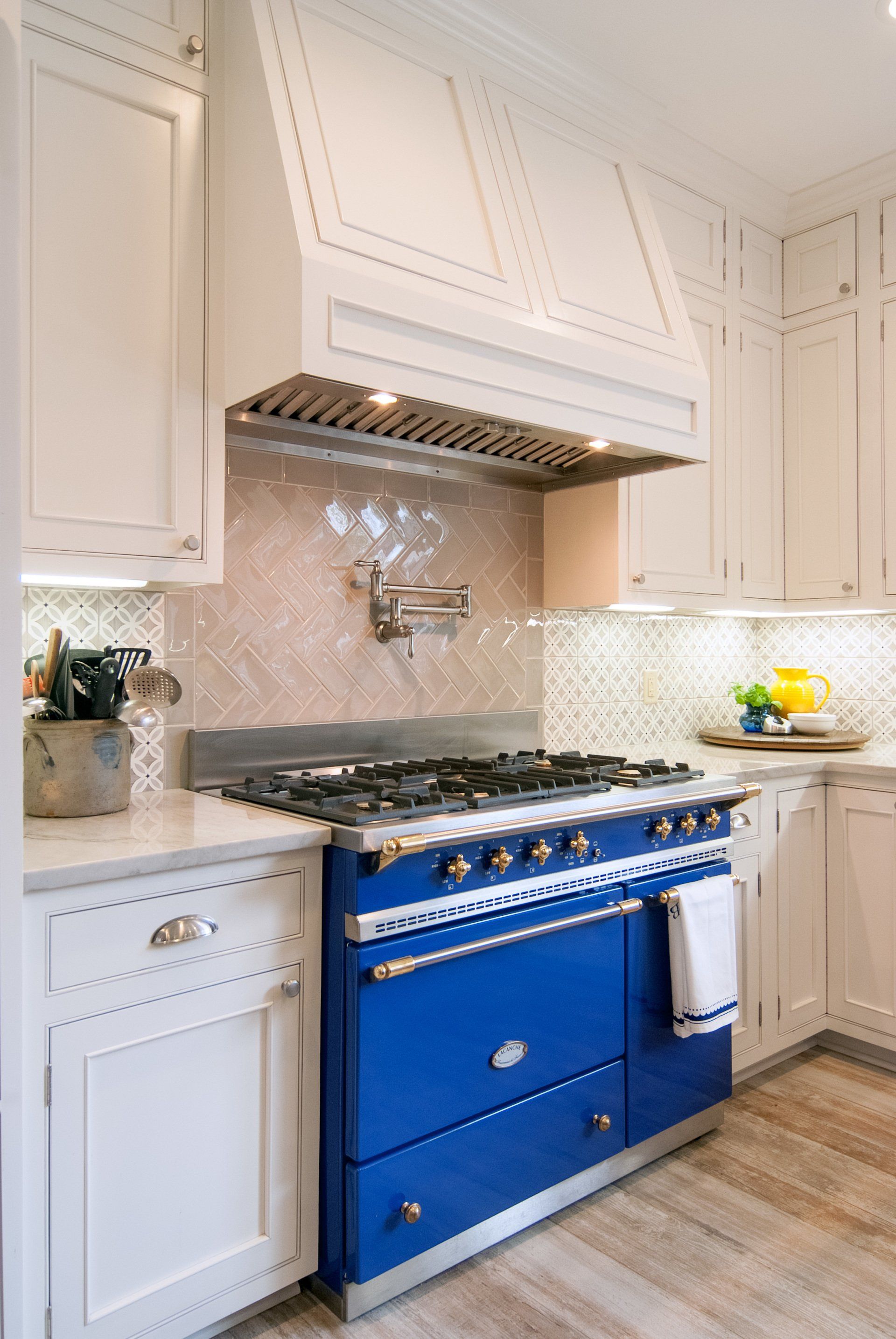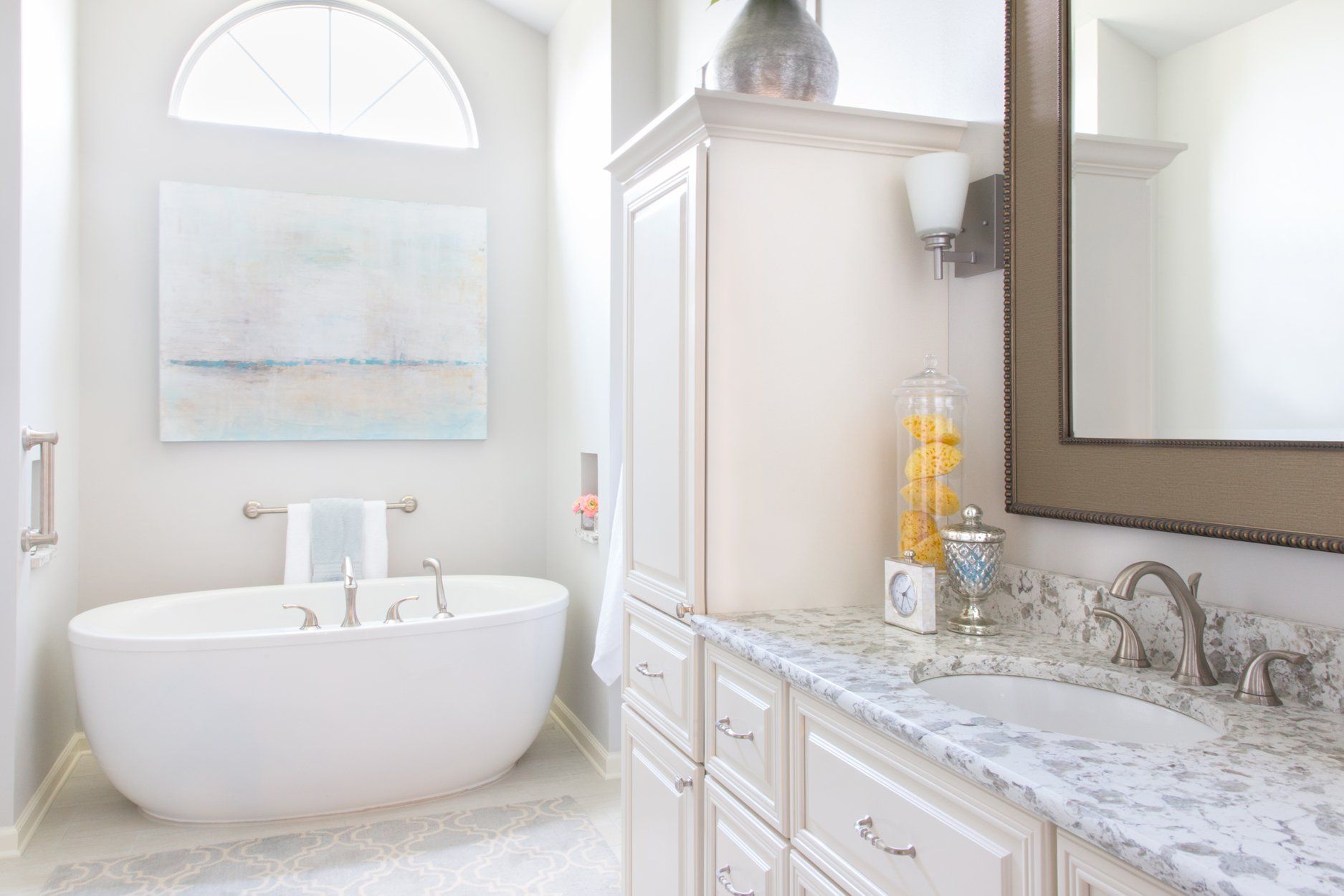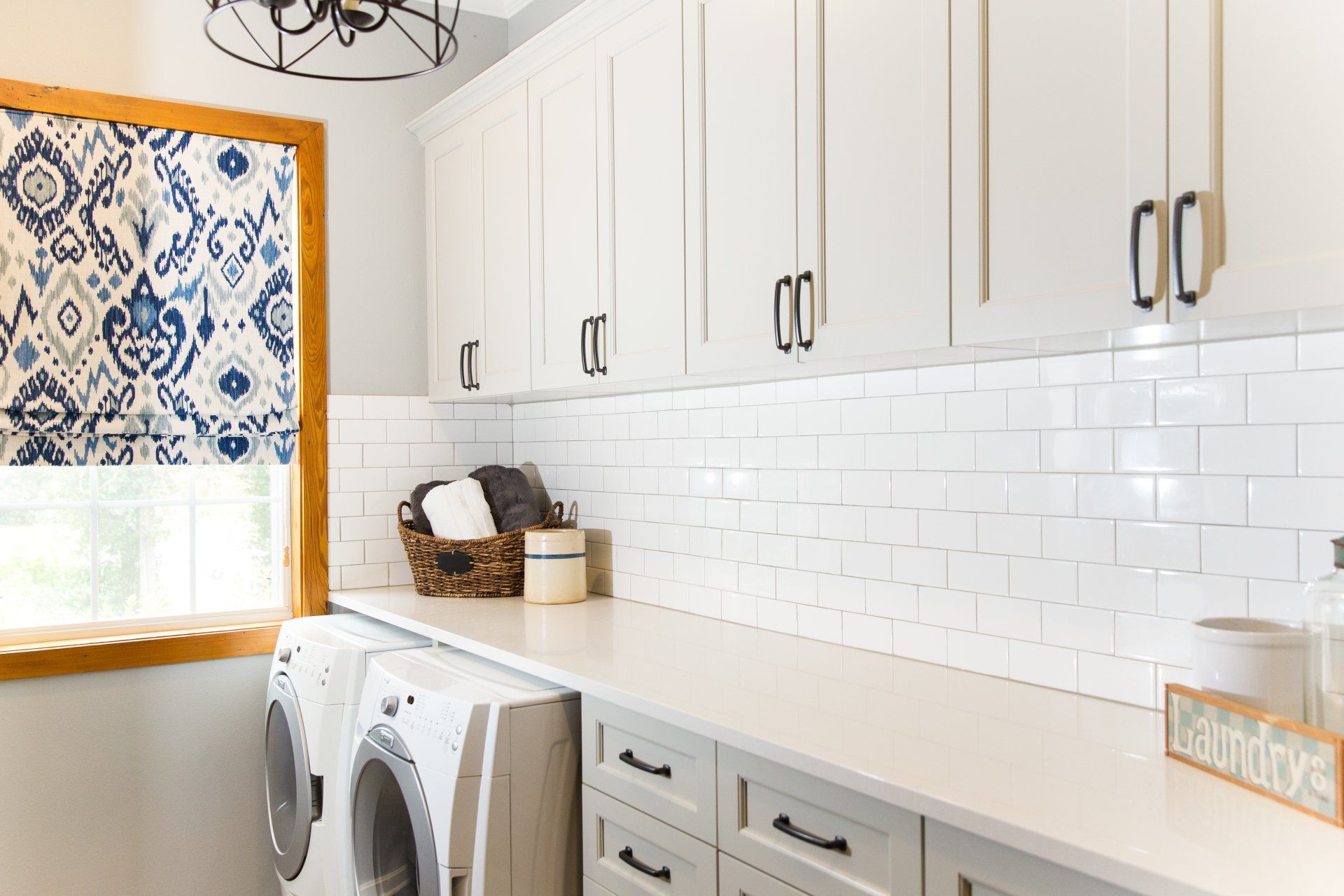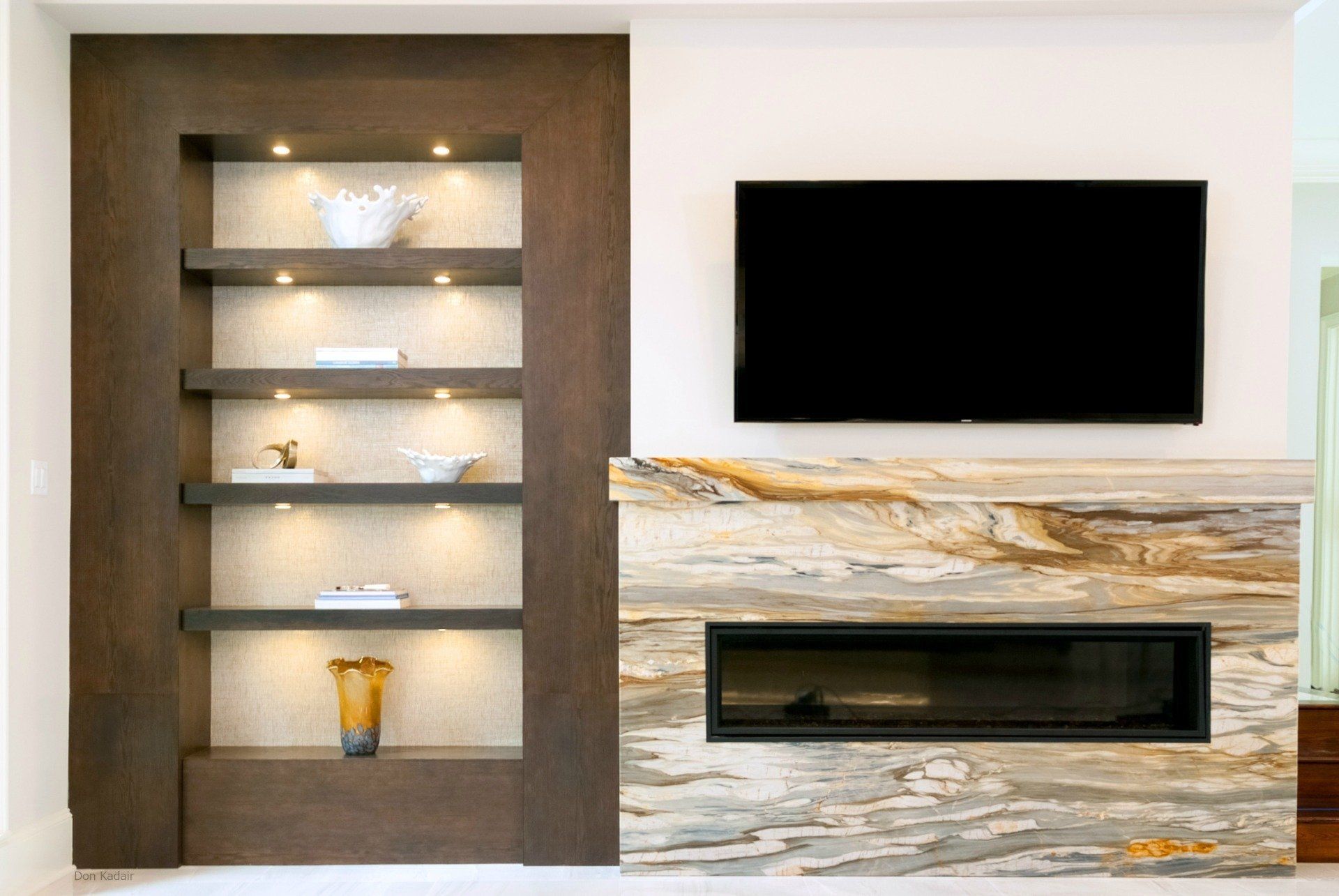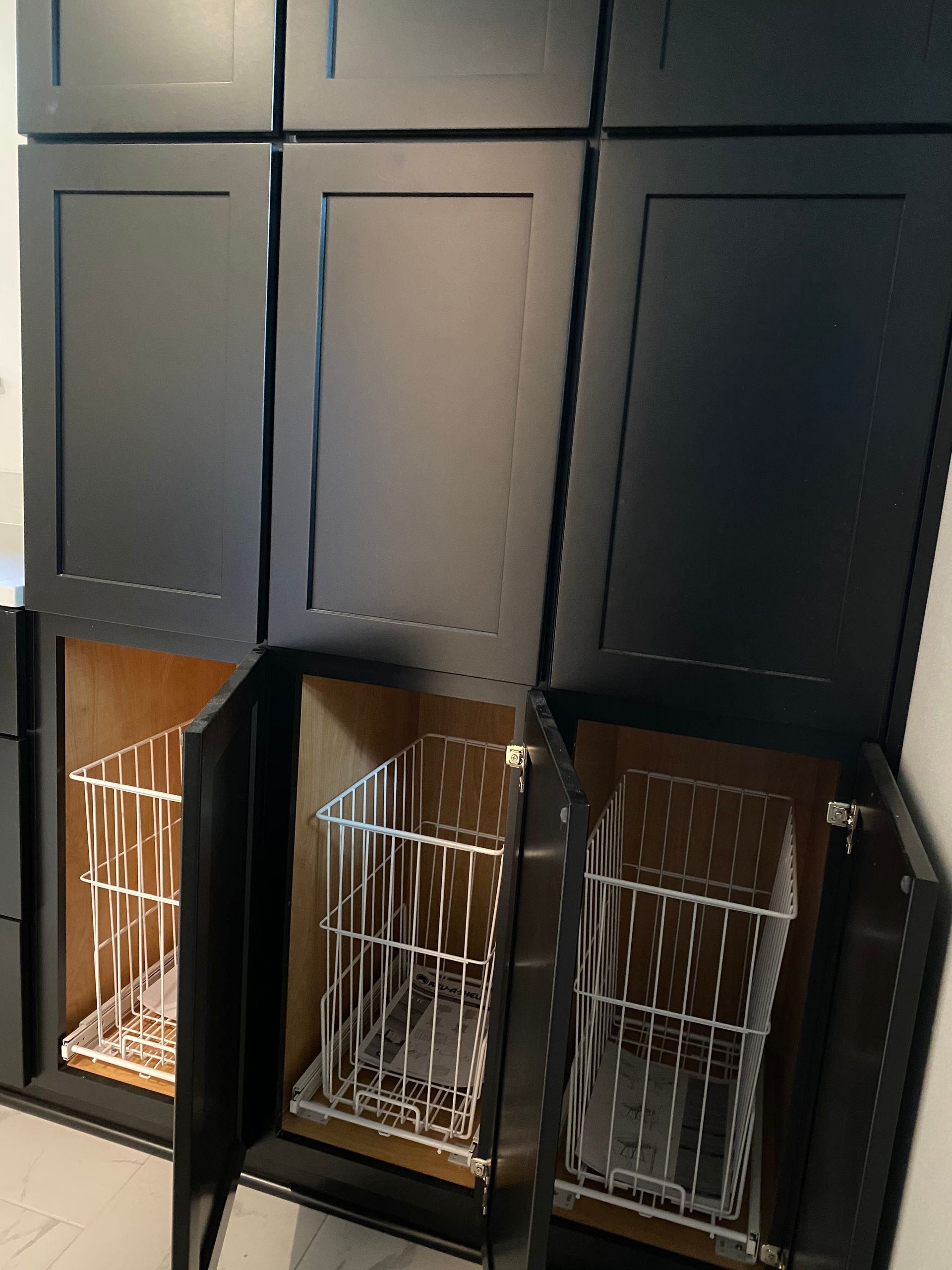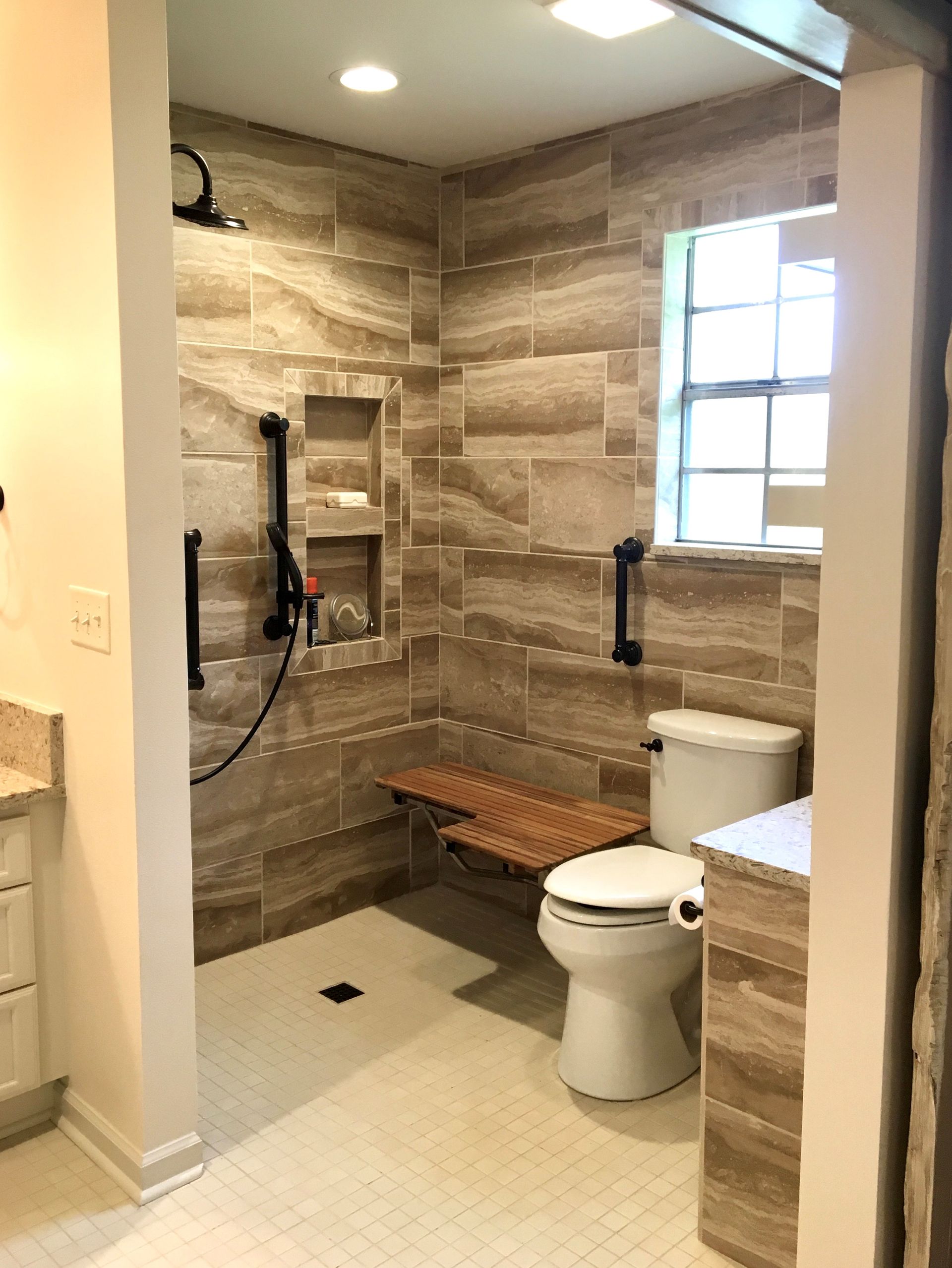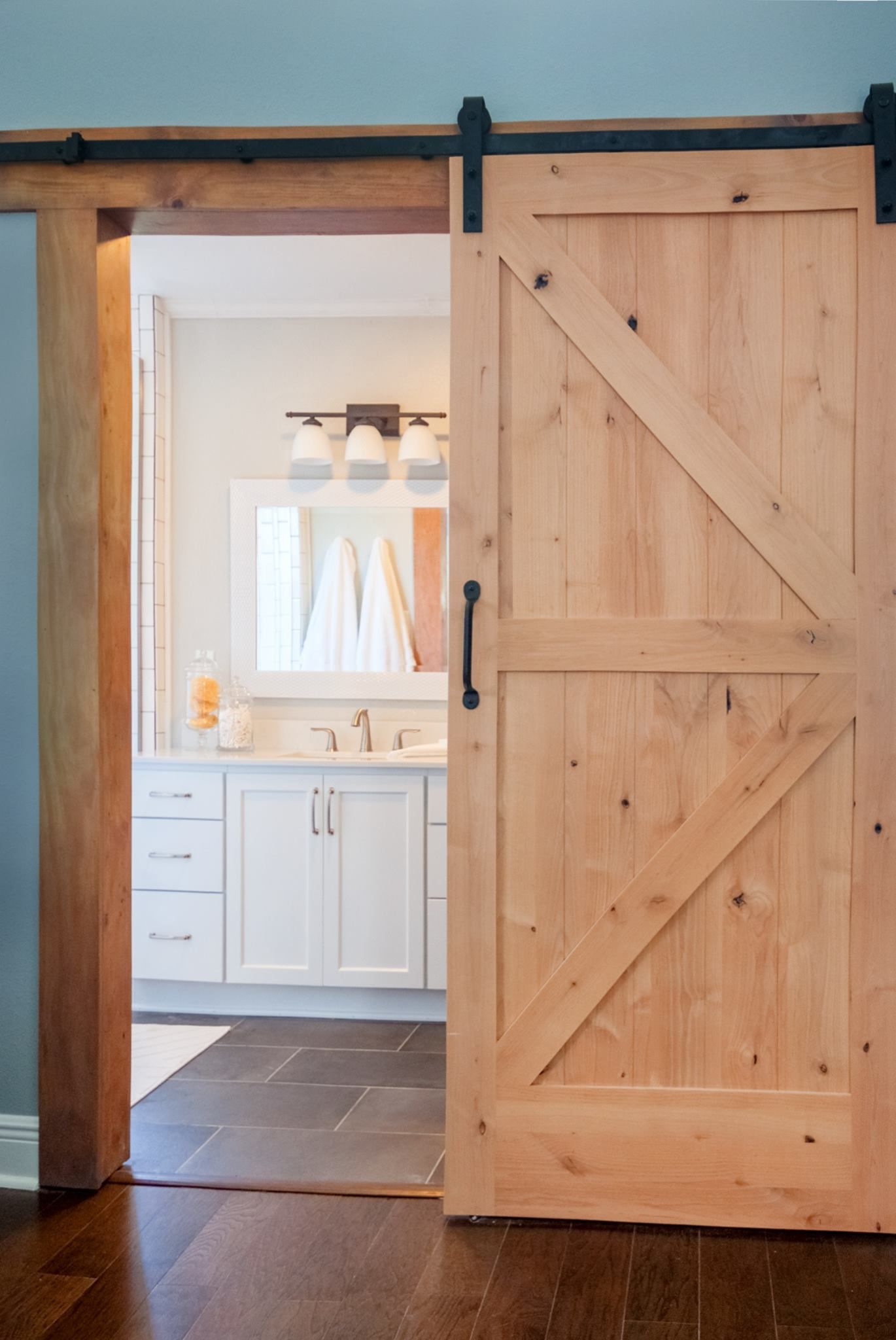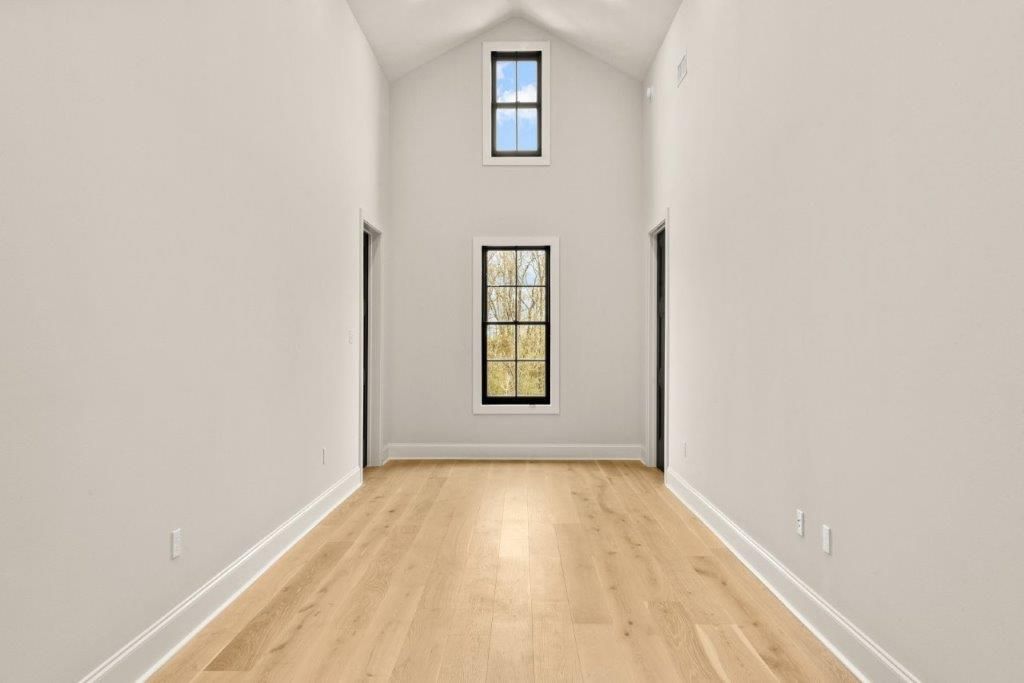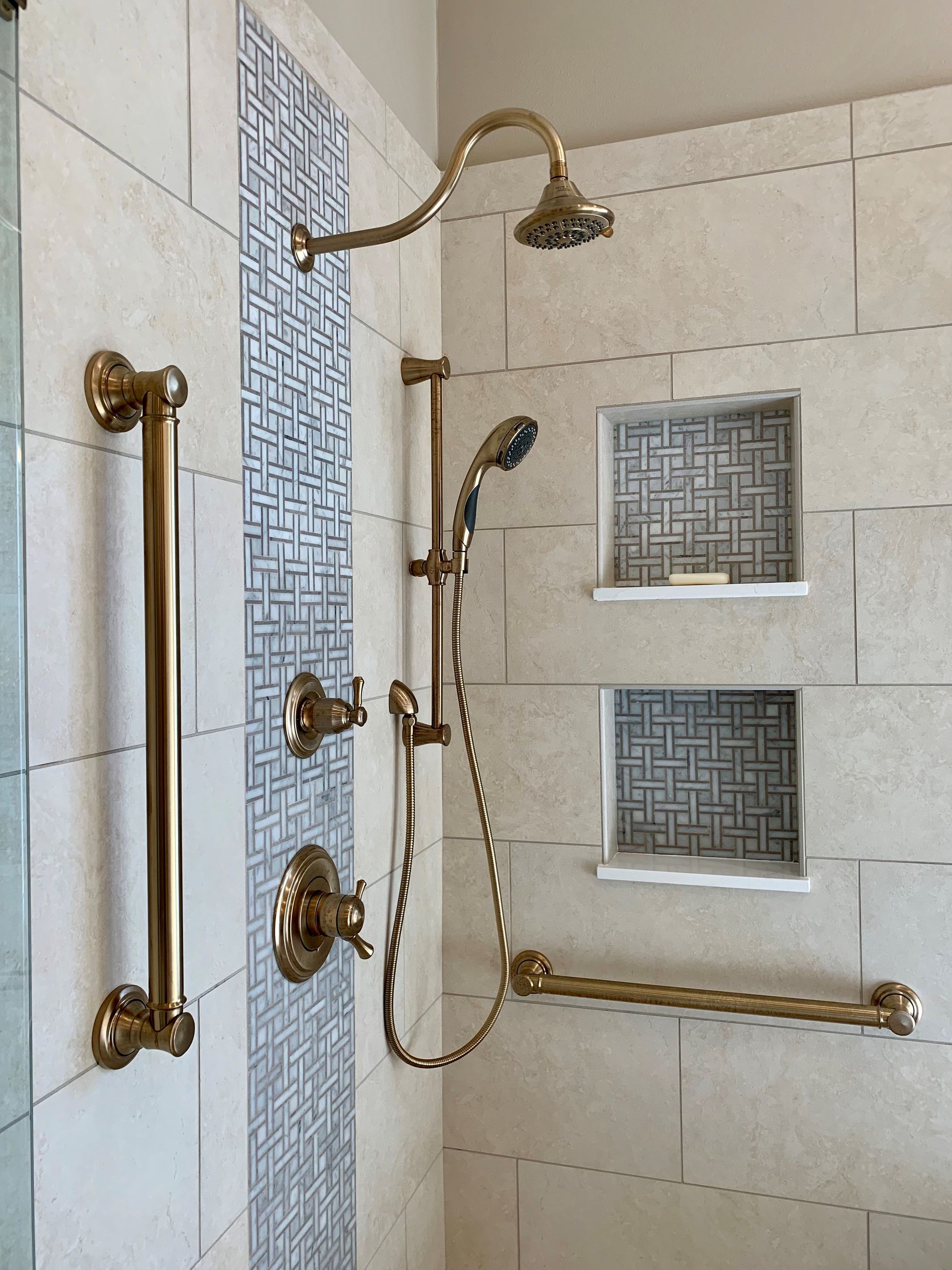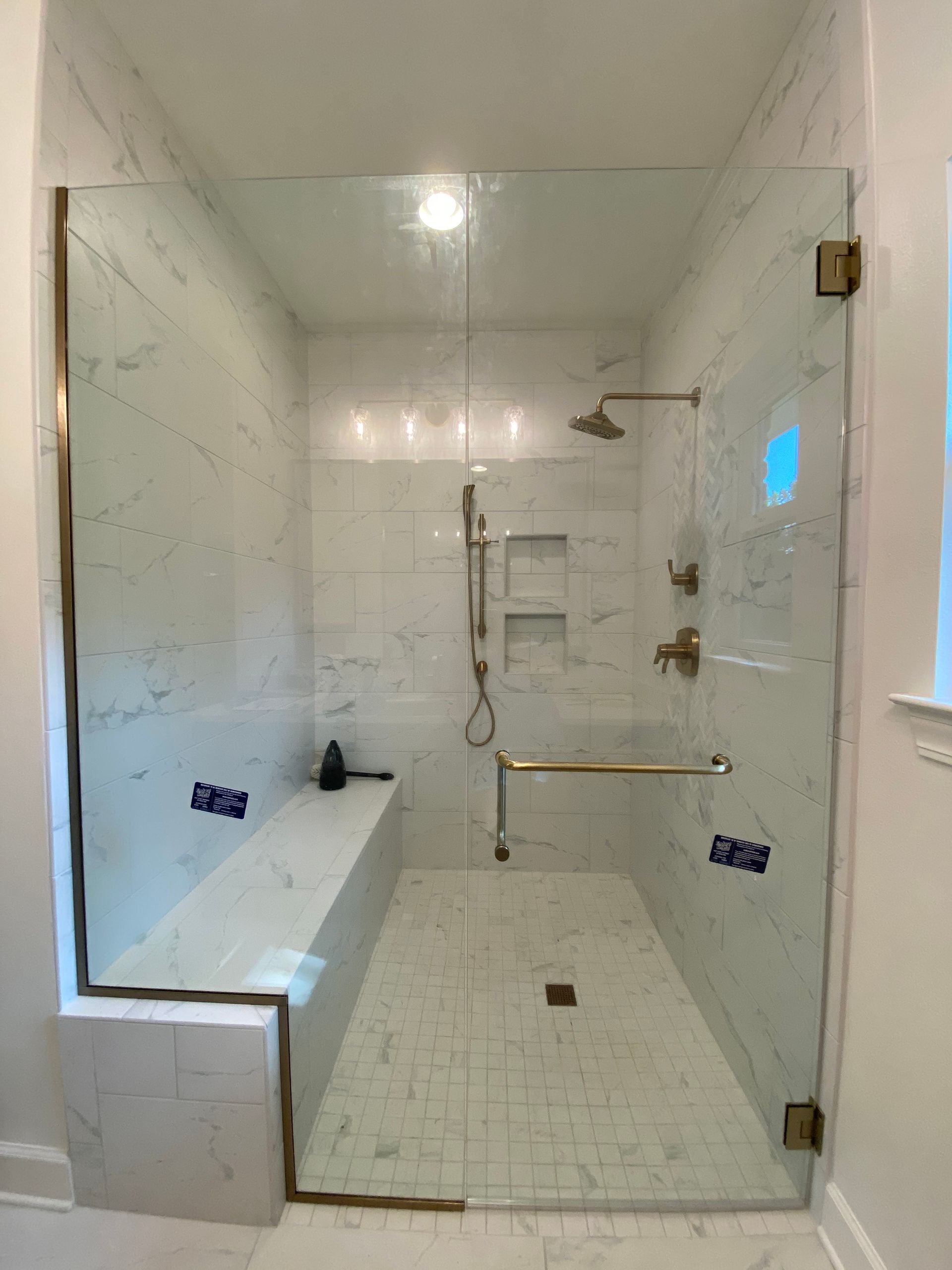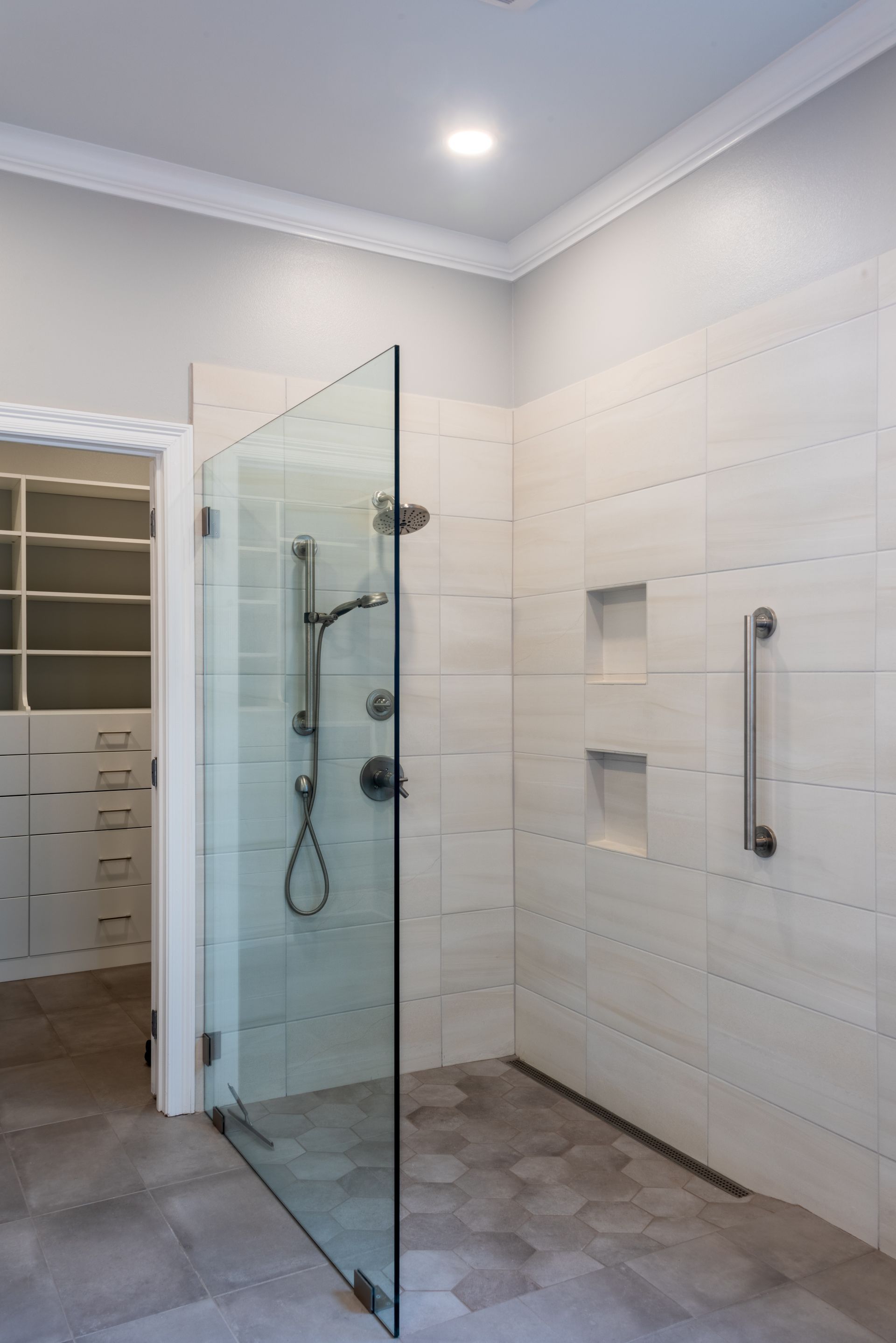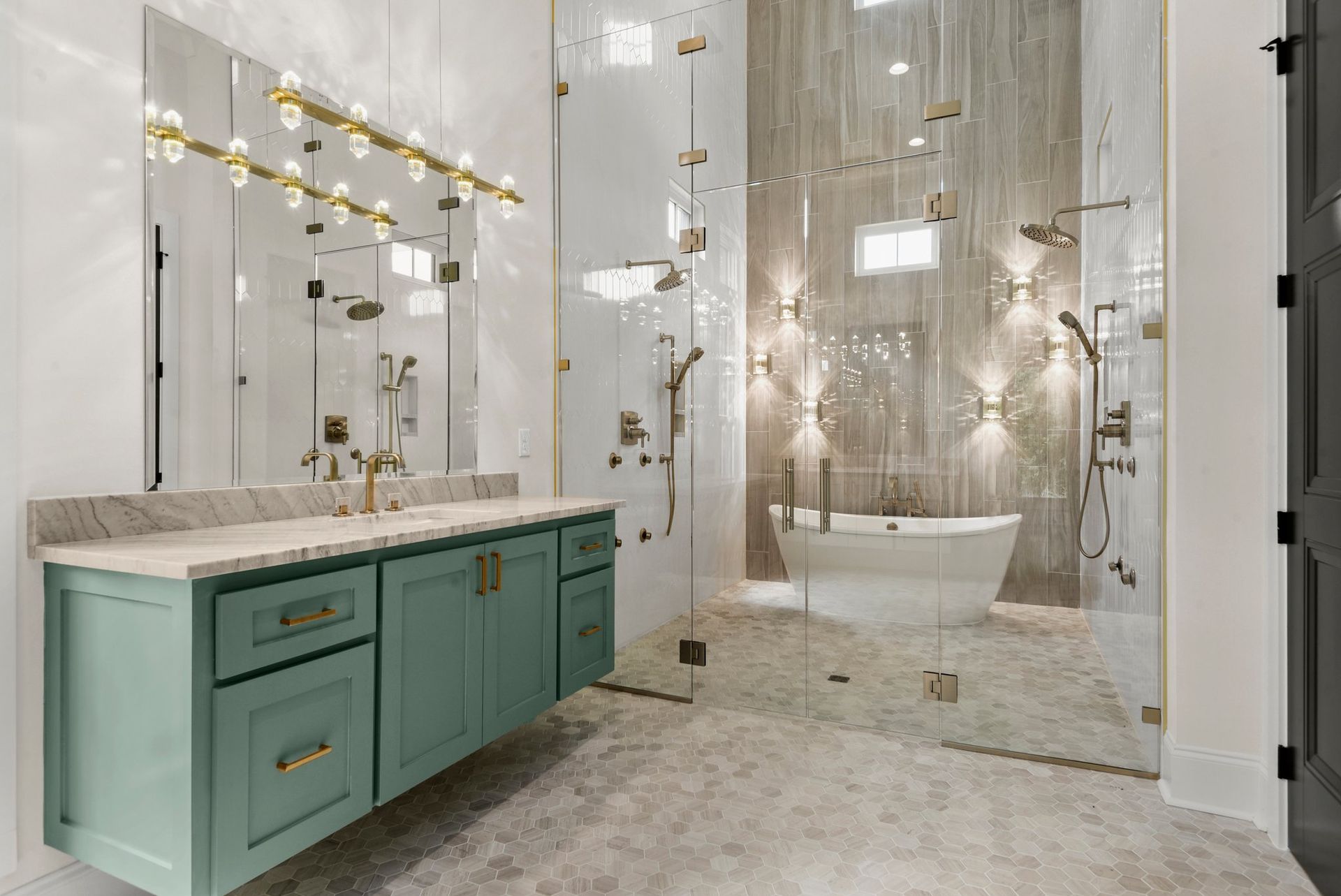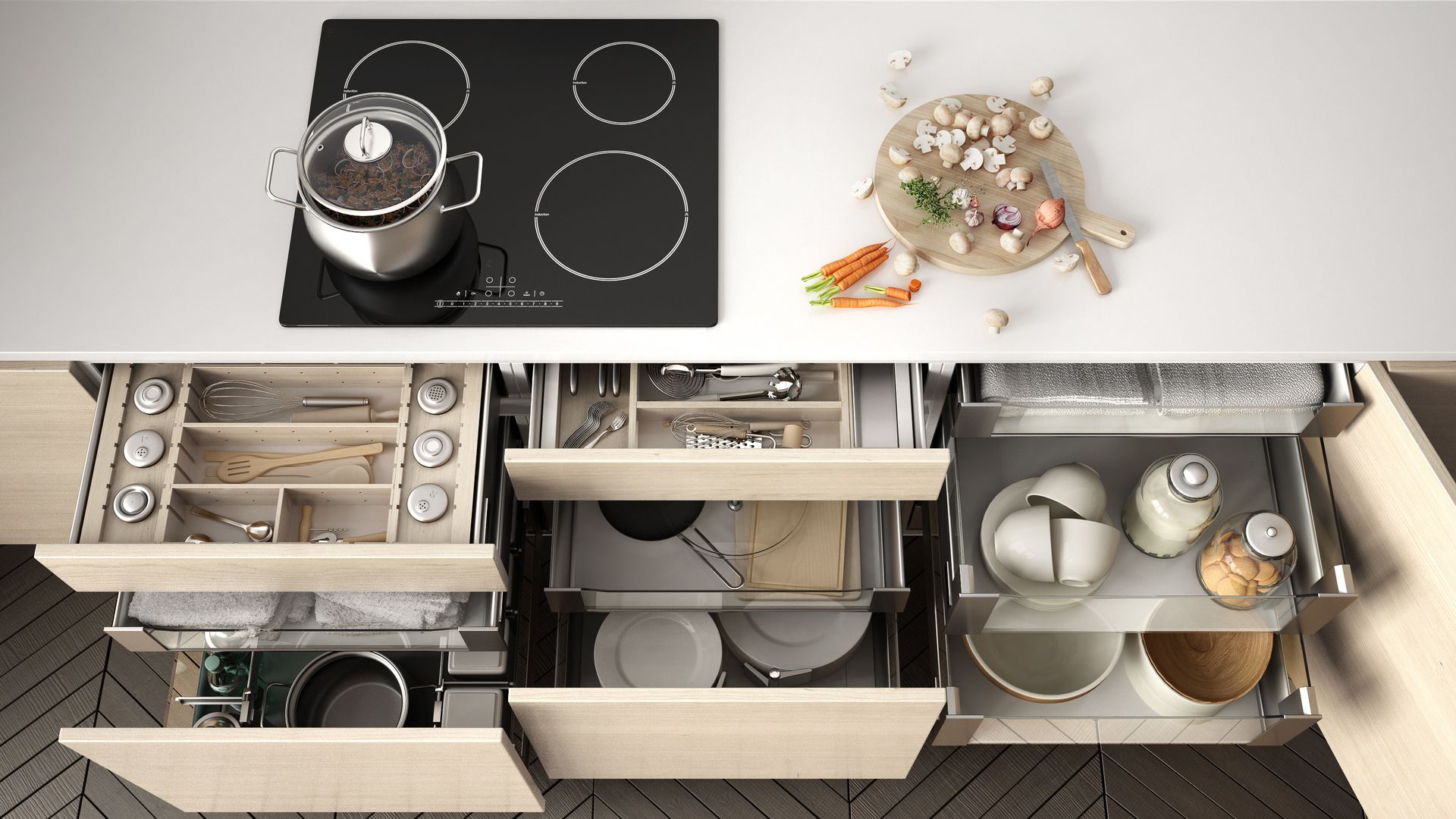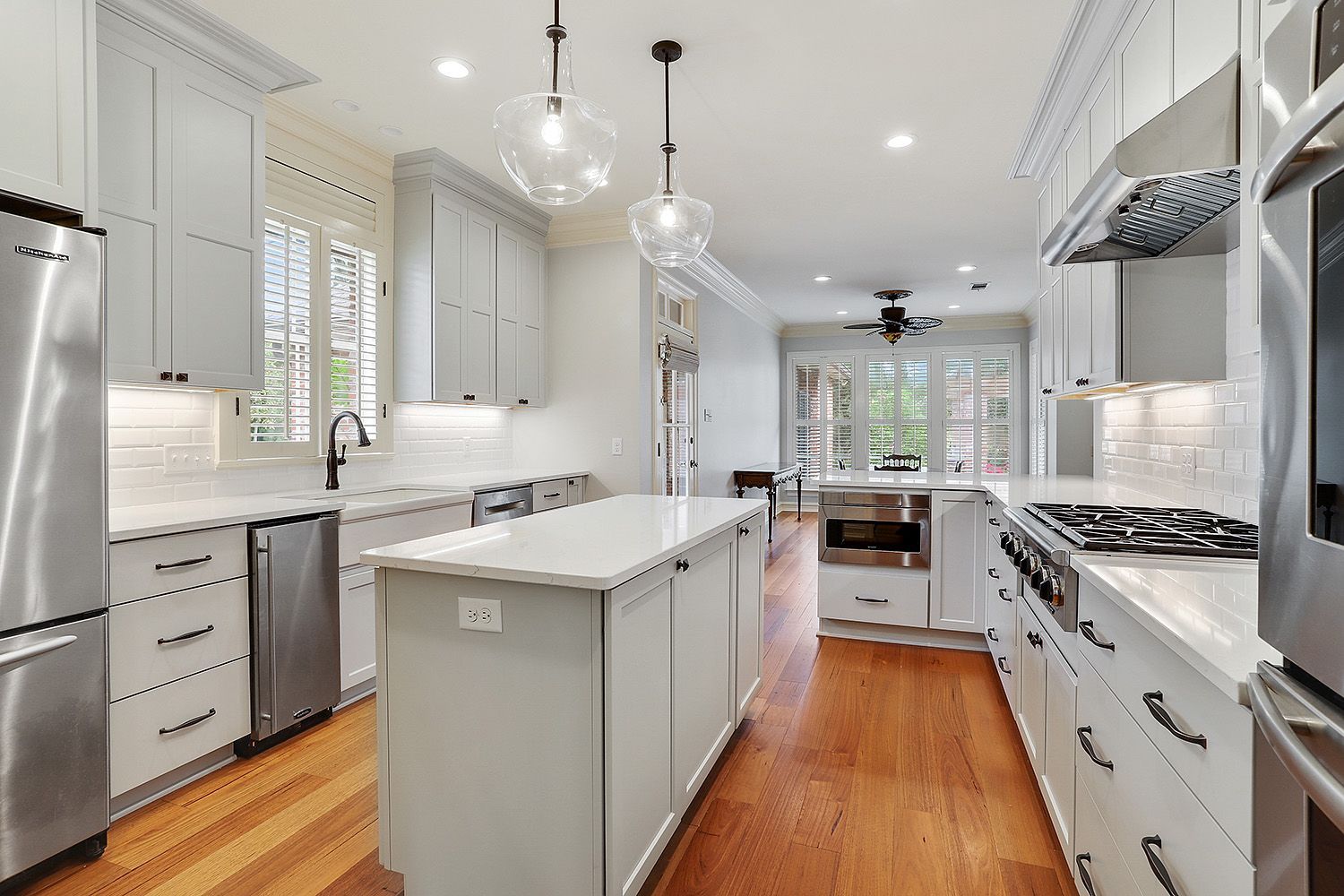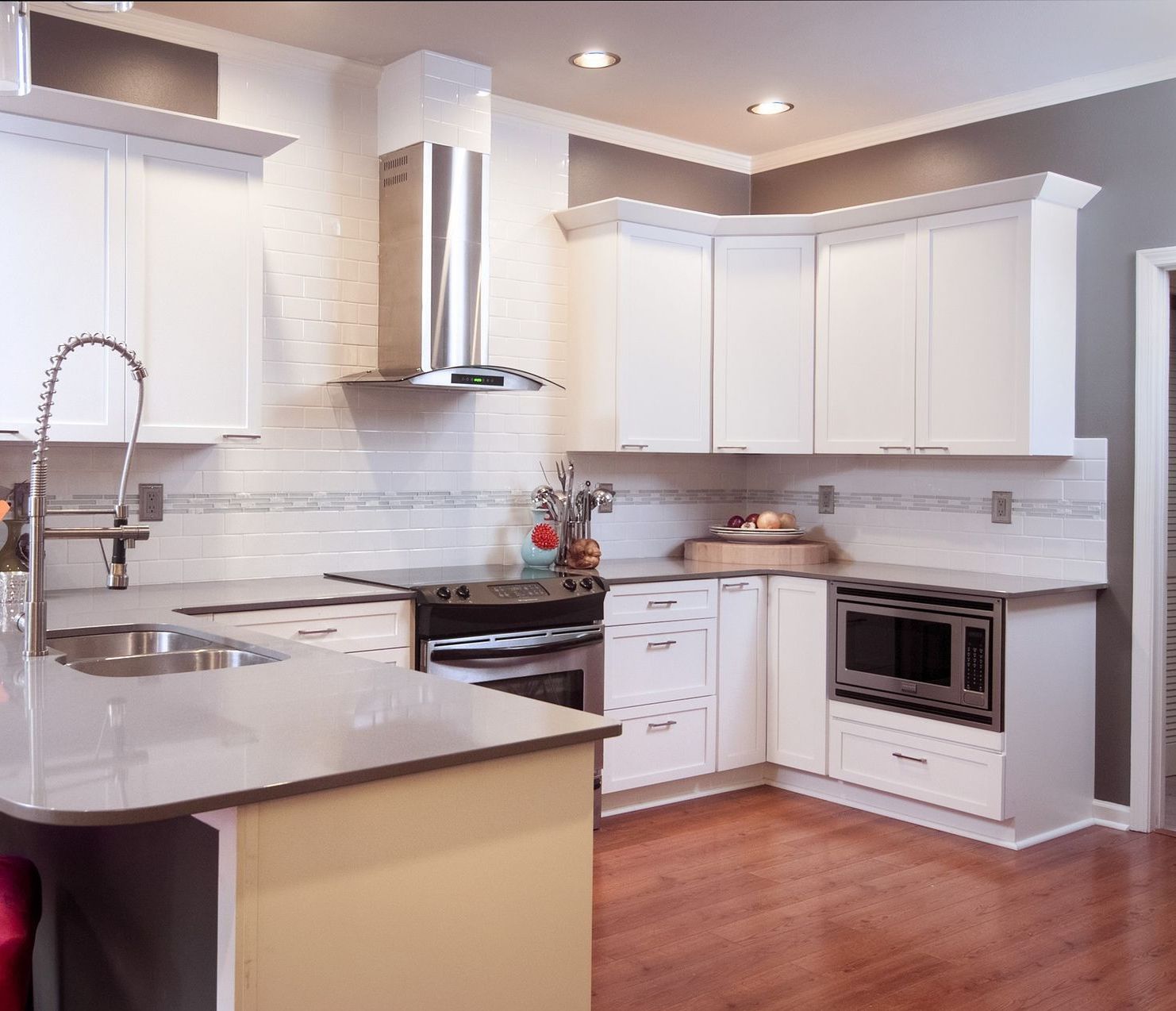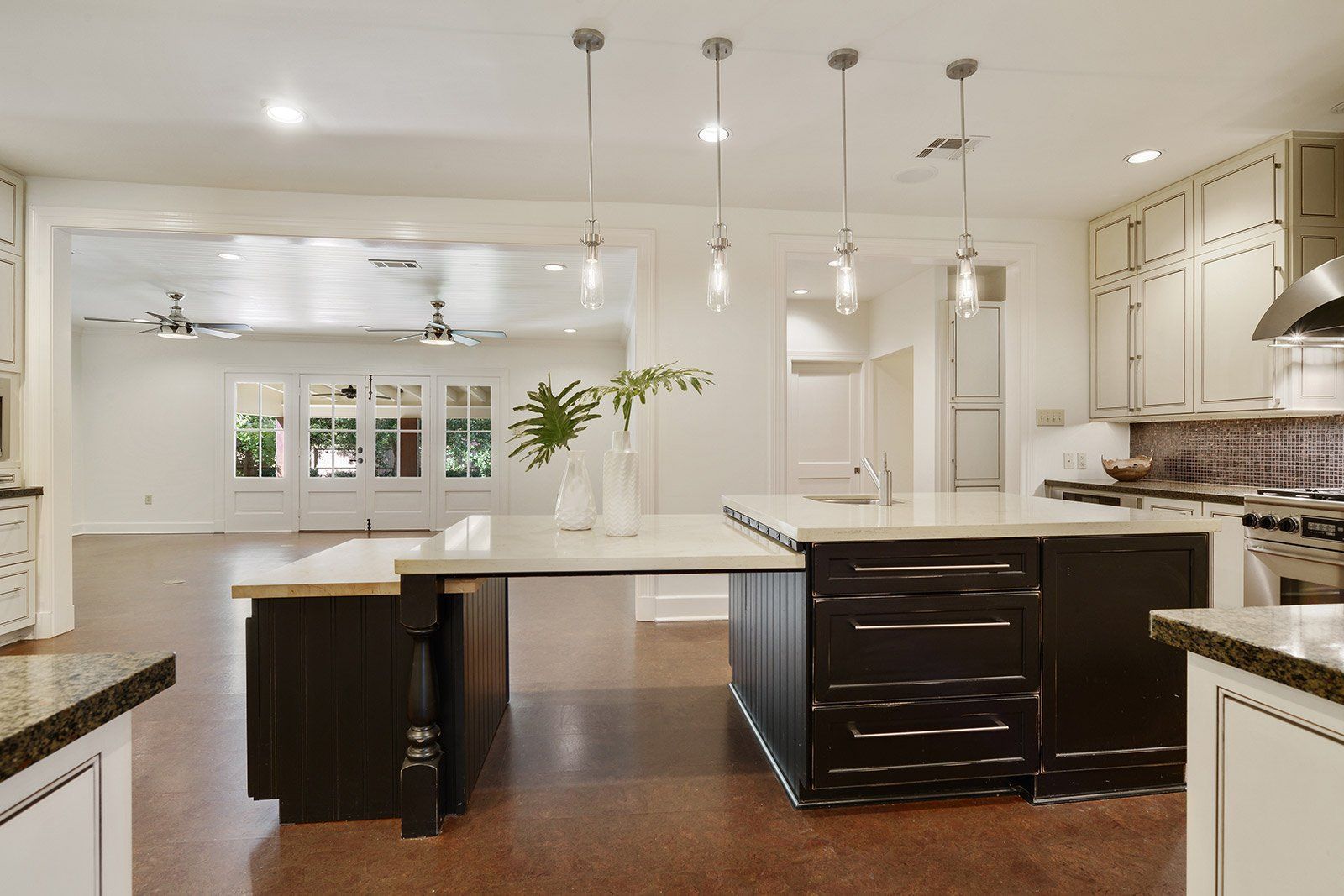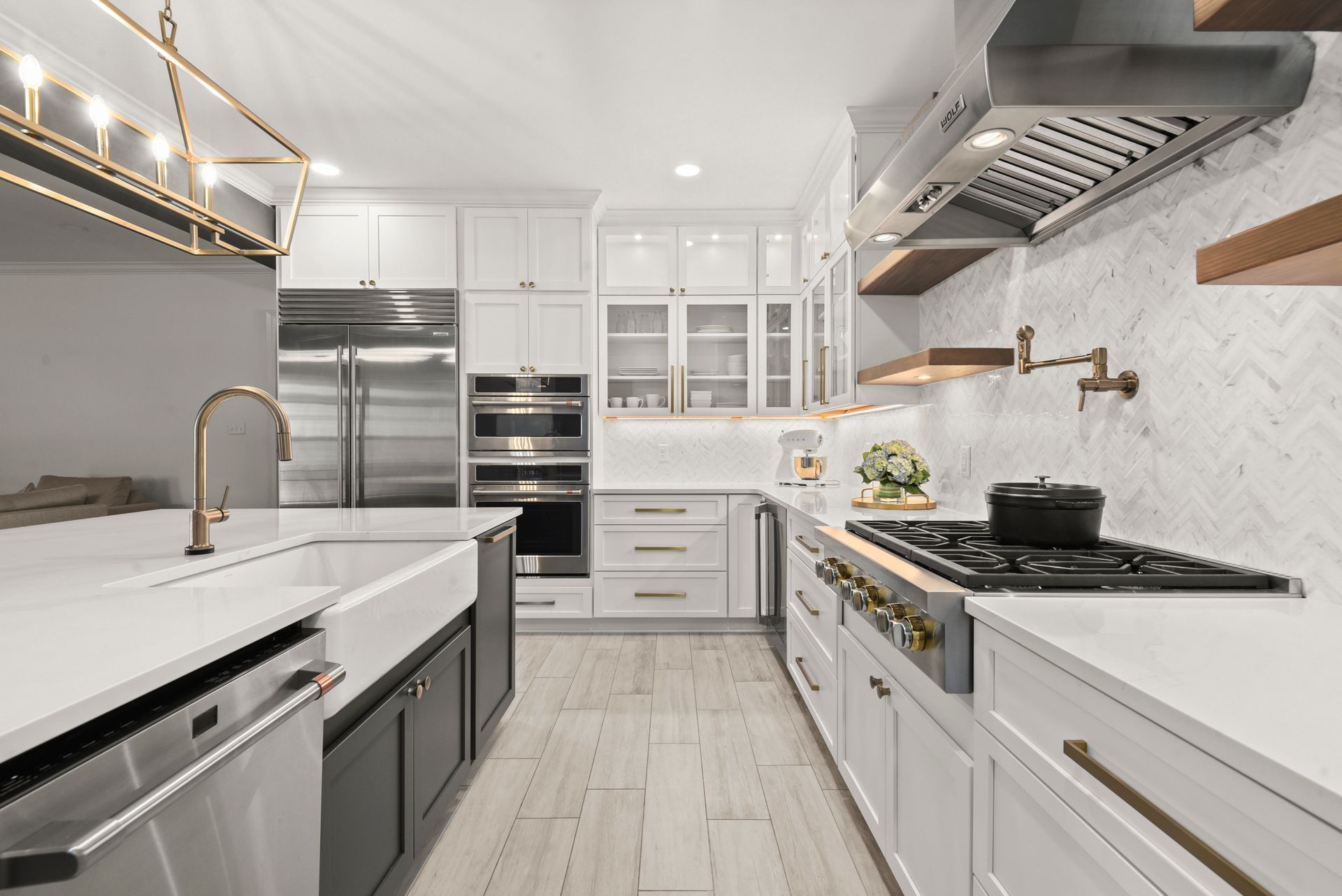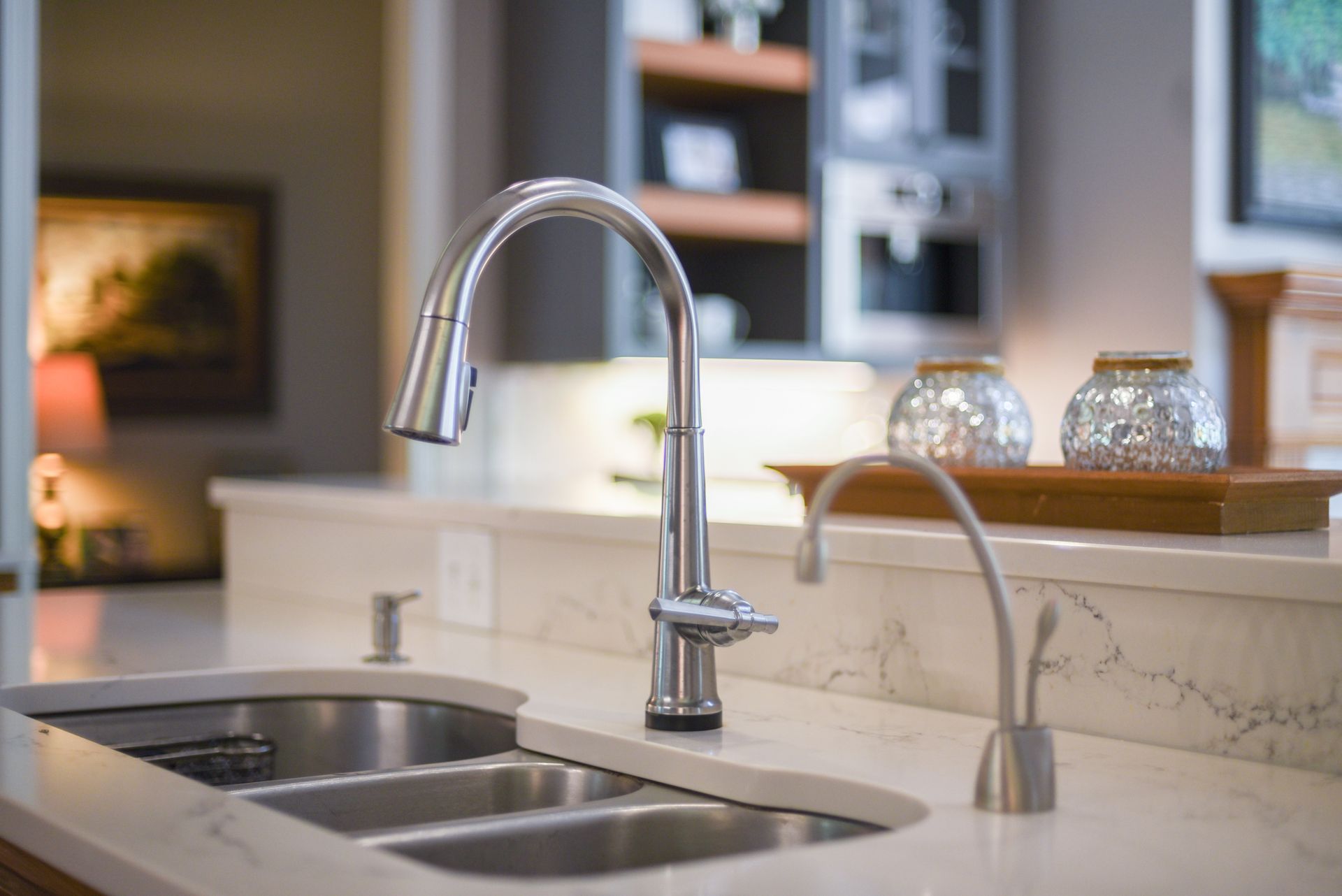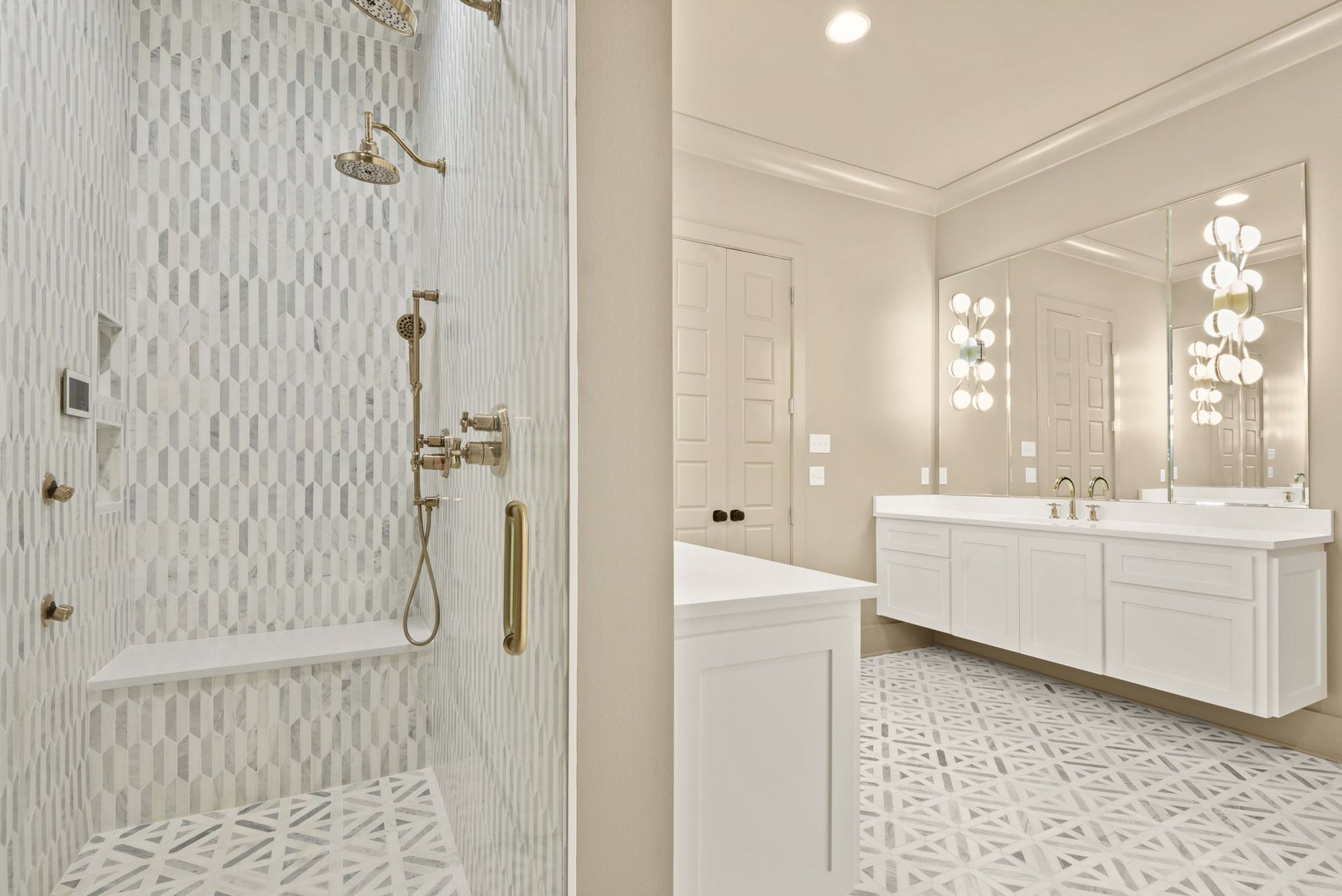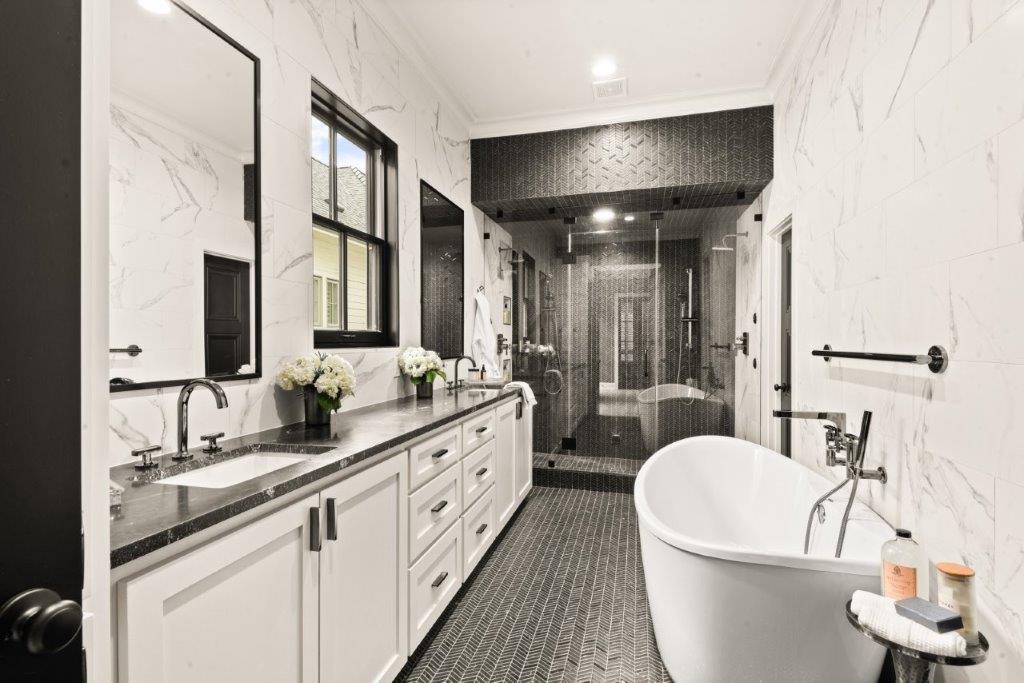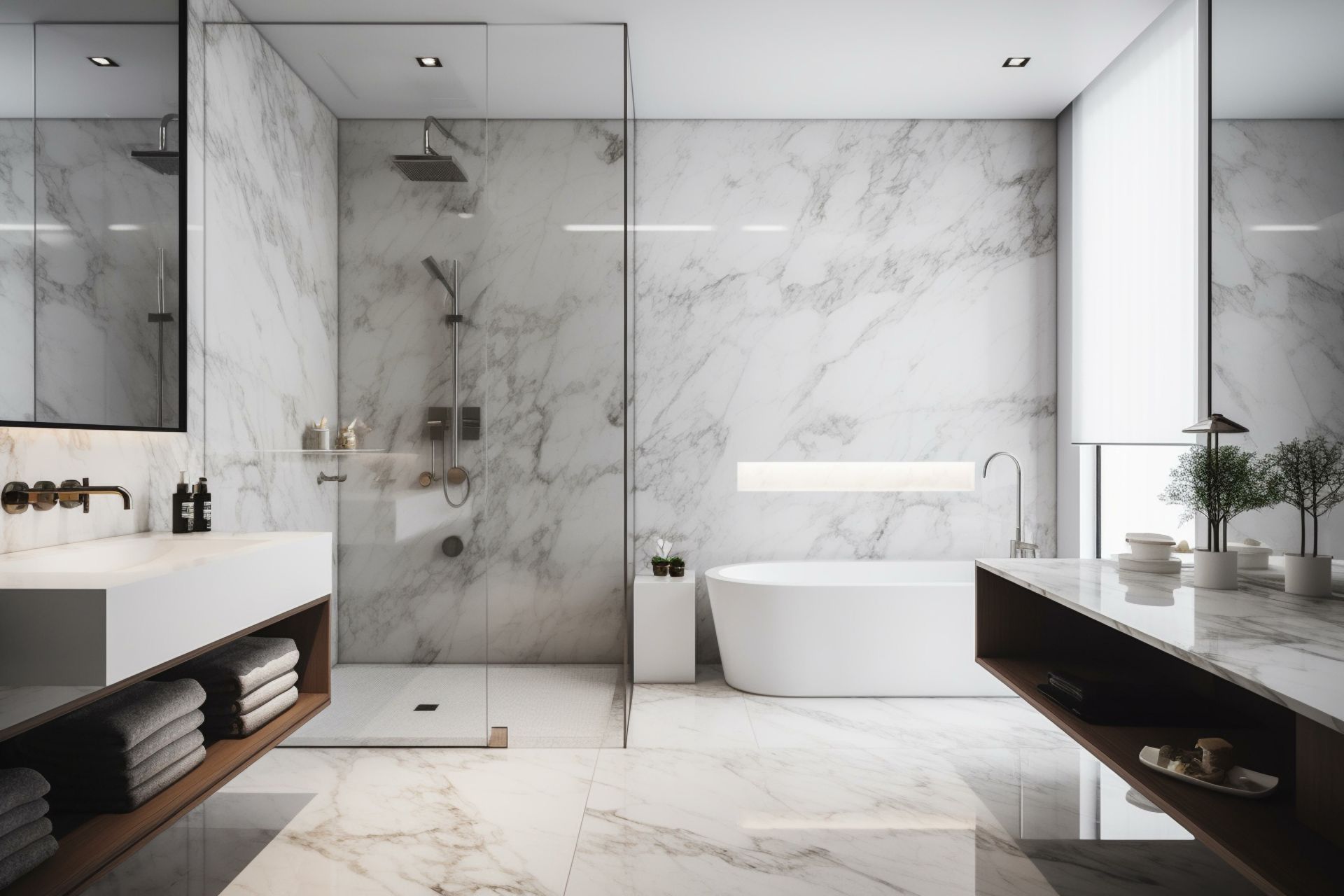As more people recognize the emotional, social, and financial benefits of remaining in a familiar environment, they are choosing to age in the comfort of their own homes. However, as we grow older, our needs and priorities shift. To maintain both safety and comfort, our living spaces must evolve to accommodate these changes and reduce potential risks that come with aging. This is where aging in place renovations and universal design play a crucial role, ensuring that your home remains both functional and accessible for years to come.
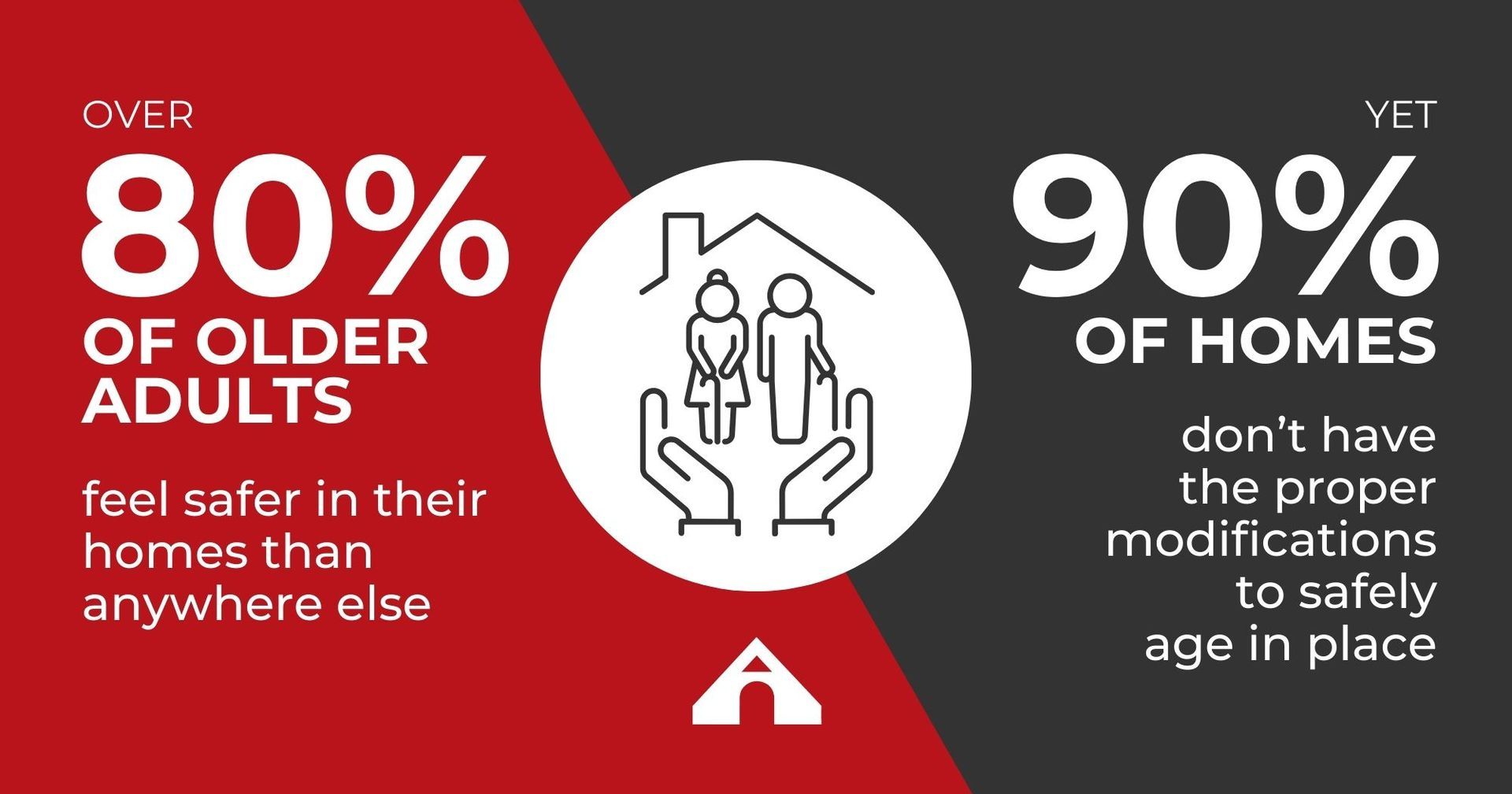
Table
of Contents:
01| What is Aging in Place?
02| What is Universal Design?
03| How to Choose an Aging in Place Contractor
04| Aging in Place Concepts You Should Consider
05| Do Aging in Place Renovations Increase a Home's Value?
06| Bathroom Renovations for Aging in Place
07| Kitchen Renovations for Aging in Place
08|
Bedroom and
LivingSpace Renovations for Aging in Place
What is Aging in Place?
Aging in place refers to the ability of older adults to continue living in their own homes safely, independently, and comfortably, regardless of age or physical ability. Advances in home design, and assistive technology have made it easier than ever for individuals to maintain their independence while receiving the necessary support to age with dignity.
What are the benefits of Aging In Place?
1. Familiarity and Comfort: Your home is filled with memories and personal touches that contribute to emotional well-being. Remaining in a familiar setting helps reduce anxiety and confusion, particularly for those experiencing cognitive decline.
2. Cost Savings: Assisted living facilities and nursing homes can be expensive, with ongoing costs that quickly add up. Aging in place can be more affordable, especially with thoughtful home modifications.
3. Maintained Social Connections: Moving to a care facility often disrupts established social networks, but remaining at home allows individuals to stay connected with family, friends, and their local community.
4. Personalized Care and Support: Aging in place allows individuals to tailor their care to their unique needs, whether through family support, professional in-home care services, or the integration of smart home technology for added convenience and safety.
5. Better Quality of Life: Staying in one’s home promotes a greater sense of control, dignity, and life satisfaction, contributing to overall well-being.
Plan Ahead to Age In Place Comfortably
While aging in place offers many advantages, it requires careful planning to ensure that a home remains safe, accessible, and practical as needs change over time. Proactive modifications and adaptations can help prevent accidents, enhance mobility, and create a comfortable living space for years to come.
Key areas to consider when preparing for aging in place:
Home Safety: Reducing fall risks by installing grab bars, adequate lighting, and non-slip flooring.
Accessibility: Making adjustments such as wider doorways, step-free entrances, and user-friendly kitchen and bathroom layouts.
Comfort and Convenience: Implementing smart home technology, voice-activated devices, and easy-to-use appliances to simplify daily tasks.
Future Needs: Anticipating changes in mobility, vision, and overall health to ensure the home continues to meet evolving requirements.
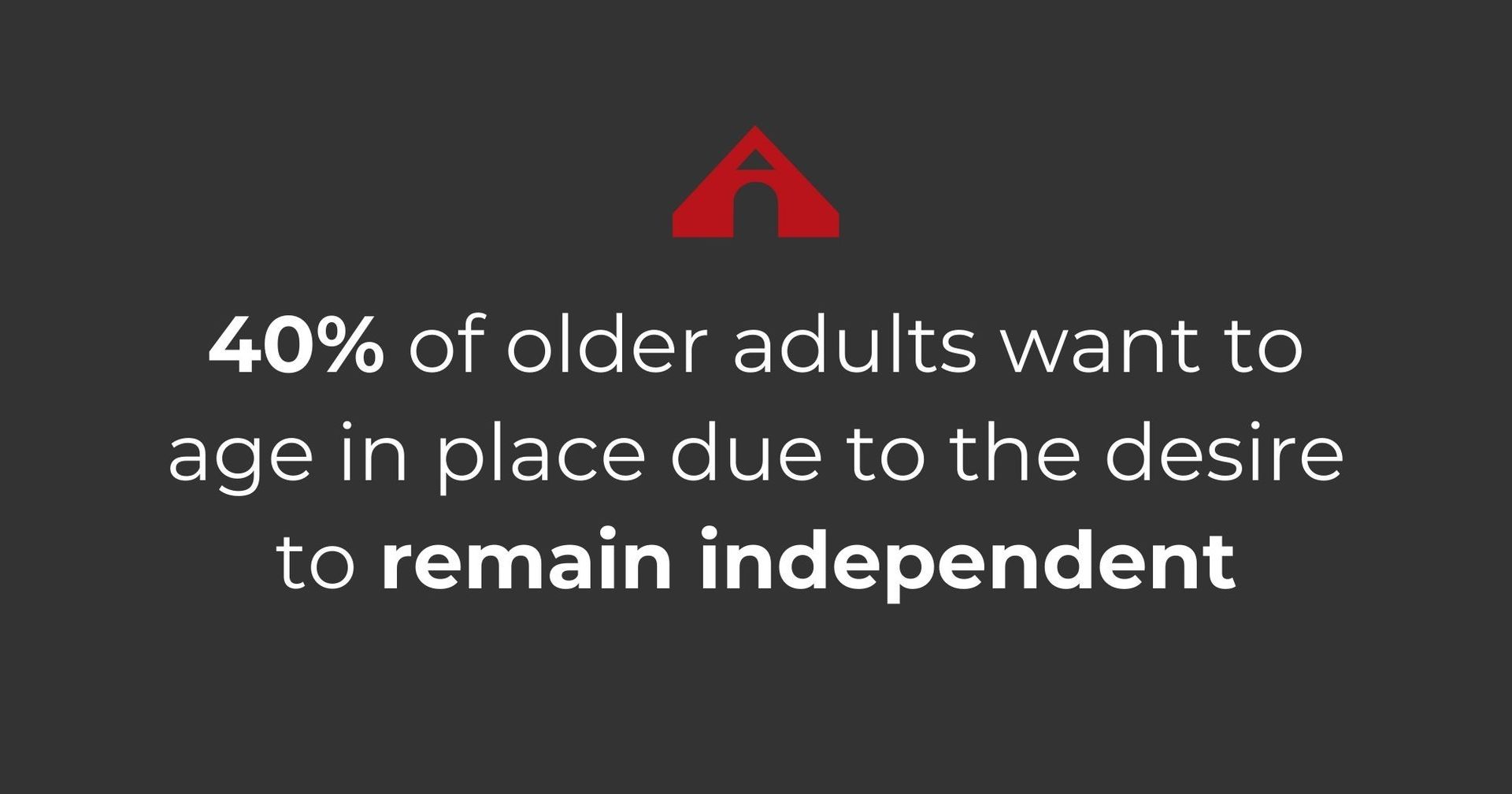
What is Universal Design?
Universal Design is an approach to home design that prioritizes accessibility, safety, and ease of use for everyone, regardless of age or physical ability. It eliminates barriers and allows people to navigate their homes with minimal effort and maximum comfort.
How is Universal Design used in Aging-in-Place Renovations?
Universal Design plays a key role in making homes adaptable and functional for aging in place. Unlike traditional renovations that are designed for immediate needs, Universal Design ensures that a home remains accessible for people of all ages and abilities—not just seniors or those with mobility challenges. By incorporating Universal Design elements into a home, aging in place becomes not only possible but also practical and comfortable, ensuring long-term livability and peace of mind.
Key Principles of Universal Design
1. Equitable Use: Design should be useful and accessible to people with diverse abilities, ensuring that everyone, regardless of mobility or physical limitations, can use a space effectively.
2. Flexible Use: A space or product should accommodate a wide range of individual preferences and abilities.
3. Simple and Intuitive Use: Design should be easy to understand, regardless of the user's experience, knowledge, or cognitive ability.
4. Perceptible Information: Essential information should be conveyed clearly, using multiple methods (visual, auditory, or tactile) to ensure comprehension by all users.
5. Tolerance for Error: The design should minimize hazards and reduce the risk of unintended actions.
6. Low Physical Effort: A space should be designed to be usable with minimal strain or exertion.
7. Size and Space for Approach and Use: Sufficient space should be provided for comfortable approach, reach, and use, accommodating people of all sizes, mobility levels, and assistive devices.
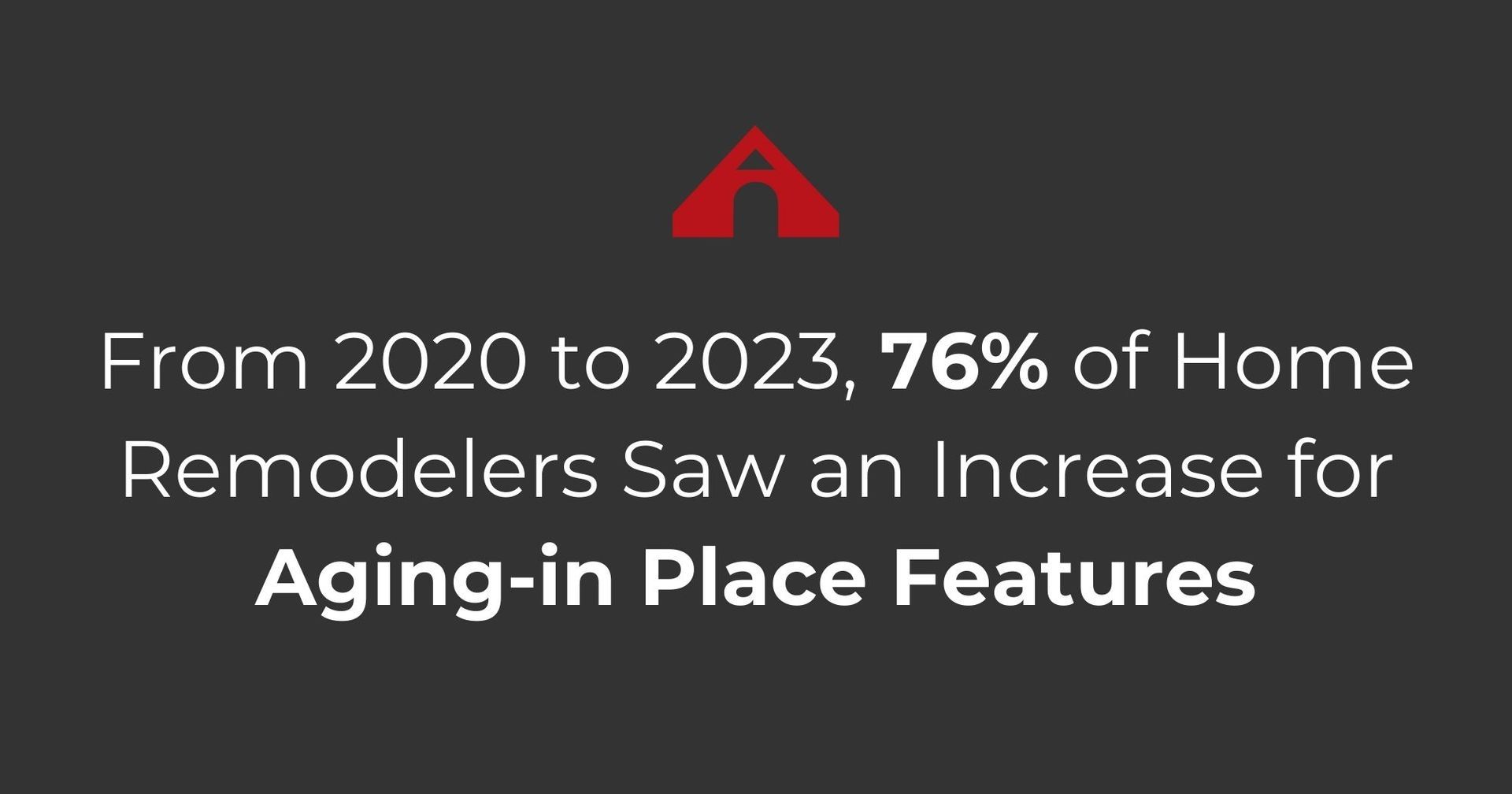
How to Choose an Aging in Place Contractor
Hiring the right professionals is crucial for ensuring that aging in place renovations meet both safety and functionality requirements. Since these modifications directly impact long-term independence and comfort, working with experienced specialists who understand accessibility and universal design principles is essential.
What is a CAPS Certified Remodeler?
A Certified Aging In Place Specialist (CAPS) is a professional trained by the National Association of Home Builders (NAHB) in designing and modifying homes for aging adults. CAPS professionals include remodelers, contractors, occupational therapists, and interior designers who specialize in accessibility and safety solutions.
What are the benefits of working with a CAPS Certified Remodeler?
Expertise in Universal Design – CAPS professionals understand how to integrate universal design principles to make a home both functional and aesthetically pleasing.
Knowledge of Safety Standards – They are familiar with ADA (Americans with Disabilities Act) guidelines and other industry standards to ensure accessibility.
Customized Solutions – They can tailor modifications to an individual’s specific needs, whether it’s installing grab bars, widening doorways, or creating barrier-free showers
Long-Term Planning – CAPS professionals design renovations that adapt to changing mobility and healthcare needs over time.
Is Acadian House Design + Renovation a CAPS Certified Remodeler?
Yes! Acadian House is a CAPS Certified Remodeler specializing in transforming homes with beautiful, functional, and accessible designs. Our expertise in aging in place and universal design ensures that your home adapts to your evolving needs while maintaining your home's value and aesthetics. Let us help you create a safe, comfortable, and elegant living space where you can age with confidence and independence.
Aging in Place Concepts You Should Consider
A safe, accessible, and comfortable home is essential for aging in place. However, many homes are not originally designed with these needs in mind. Here are some essential considerations to help you adapt your home for aging in place.
Update your Home with Safety and Accessibility in Mind
- Limit the amount of steps, stairs, and uneven surfaces in your home.
- Decrease the risk of falls by minimizing slippery floors and rugs.
- Upgrade lighting to more easily navigate hallways, staircases, and entryways.
- Install wider doorways and no-threshold doors to create easier access for individuals using mobility aids.
- Space furniture appropriately to allow for easy movement between different areas of the home.
Practical Modifications that Enhance Ease of Use
- If possible, relocate essential living spaces (bedroom, bathroom, kitchen, laundry) to the main floor.
- Install rocker light switches, lever-style door handles, and touchless faucets for convenience.
- Reduce strain and improve reachability with lower cabinets, pull-out shelves, and motorized closet rods.
- Eliminate the need to step in and out of the shower by installing a zero-entry or curb less shower.
Add Convenience with Smart Technology
- Enable hands-free control of lights, temperature, and security systems with technology like Alexa or Google Home.
- Motion-sensor lights can illuminate pathways at night to prevent falls.
- Adjust temperatures automatically with smart thermostats, helping to maintain comfort and energy efficiency
- Eliminate the need for traditional keys, allowing entry via PIN codes, fingerprint scans, or smartphone apps.
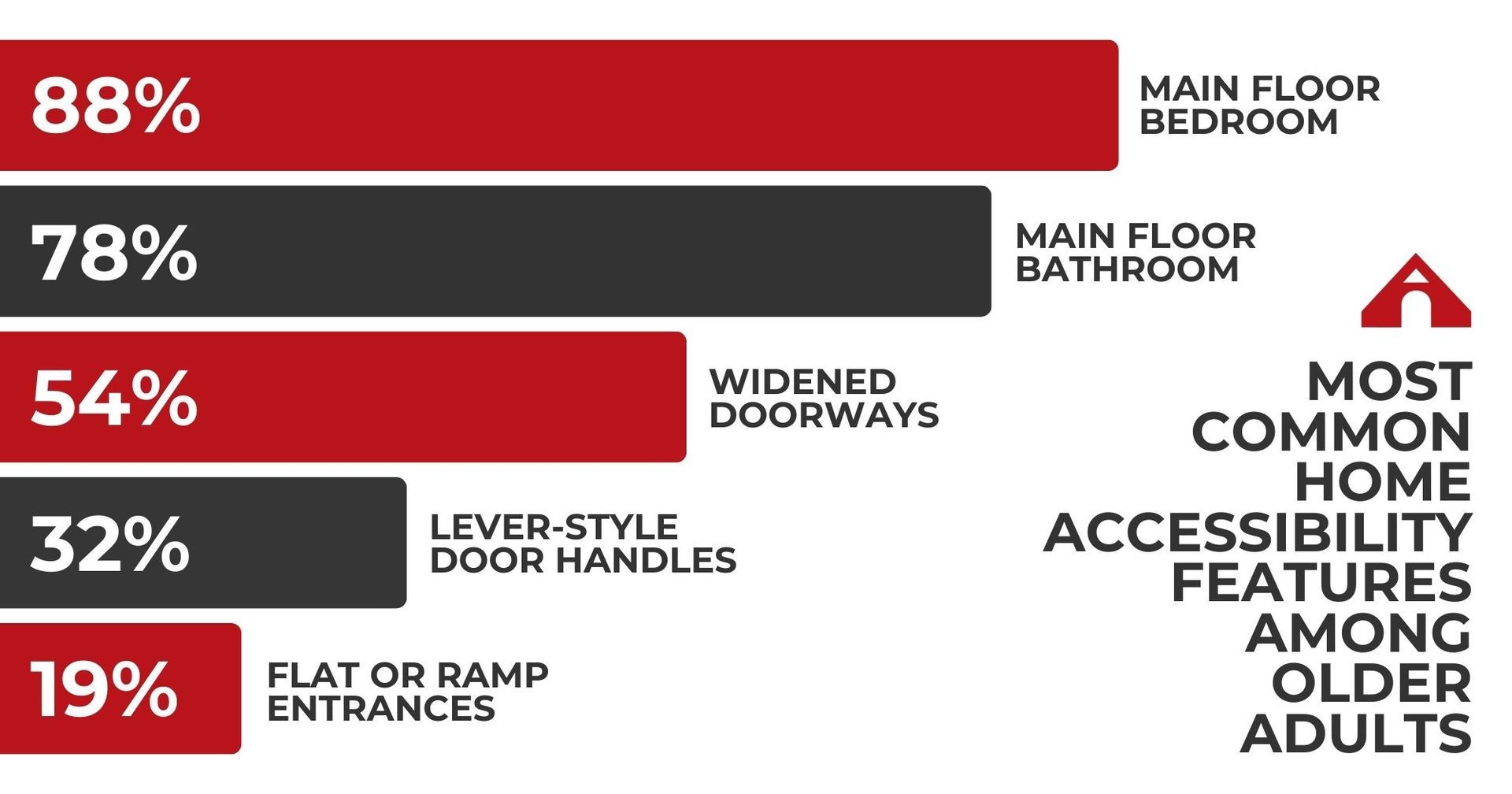
Do Aging in Place Renovations Increase a Home's Value?
Aging in place renovations are not just about improving comfort and safety—they can also enhance a home’s resale value and marketability. As the demand for accessible housing grows, homes with well-executed aging in place features are becoming more attractive to a broader range of buyers. Retirees are increasingly interested in homes that support prolonged independence, and homes with universal design elements are more appealing to buyers of all ages, providing long-term value and convenience.
Key Renovations That Boost Home Value
Certain aging-in-place upgrades are particularly valuable because they enhance both safety and aesthetics, making a home more desirable in the real estate market.
- No-step entryways and wider doorways – Improve accessibility for all residents, including those with strollers, wheelchairs, or mobility aids.
- Curbless showers – Offer a sleek, modern look while improving safety, reducing the risk of falls.
- Smart home automation – Features like voice-activated lighting, security systems, and thermostats add convenience and energy efficiency, appealing to tech-savvy buyers.
- Non-slip flooring and open-concept layouts – Create a more accessible living space while maintaining a stylish, contemporary design.
The Financial Benefits of Aging-in-Place Renovations
Investing in home modifications now can provide long-term financial benefits:
- Higher resale value – Homes with accessibility features often sell faster and at a higher price point, especially in markets with a high senior population.
- Reduced future remodeling costs – Completing modifications early prevents the need for rushed or more expensive renovations later in life.
- Energy efficiency savings – Many aging-in-place upgrades, like smart thermostats and energy-efficient lighting, can lower utility bills over time.
How to Maximize ROI on Aging in Place Renovations
To get the best return on your investment:
- Choose timeless, high-quality materials that blend accessibility with aesthetics.
- Work with a Certified Aging-in-Place Specialist (CAPS) to ensure modifications meet both current and future needs.
- Focus on universal design elements that appeal to a broad range of buyers, not just seniors.
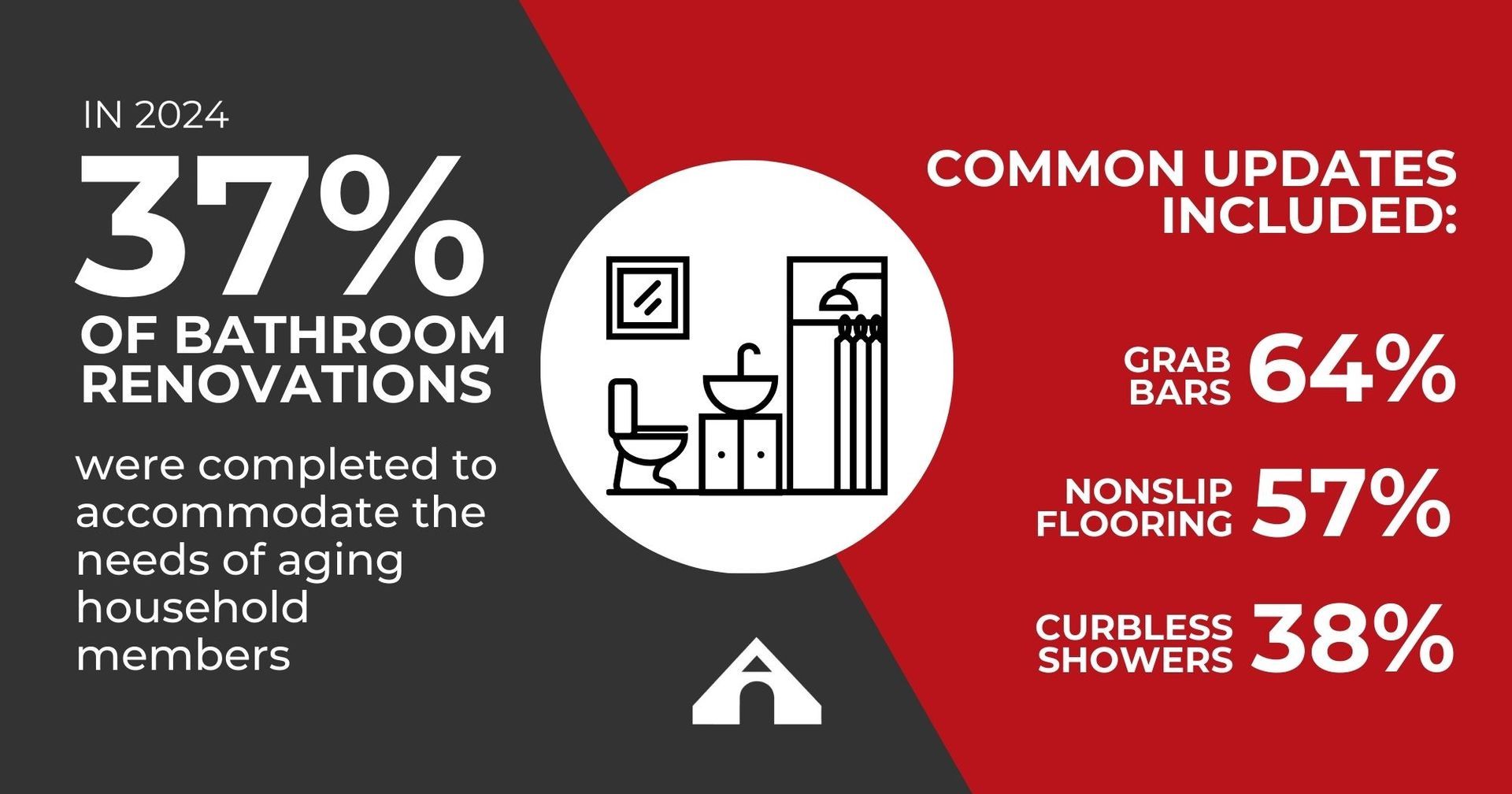
Bathroom Renovations for Aging in Place
Your bathroom is a place where you will continue to spend a lot of time and one that can be dangerous as you age. Slippery surfaces, tight spaces, and hard-to-reach fixtures increase the risk of falls and injuries. Implementing smart aging-in-place modifications ensures safety, accessibility, and comfort while maintaining an aesthetically pleasing design.
Renovations that can make your bathroom safer and more comfortable include:
- Zero-entry or curbless showers eliminate thresholds, and are easy to enter and exit, reducing tripping hazards.
- Shower benches and handheld showerheads can provide flexibility and support, allowing individuals to bathe comfortably while seated.
- Walk-in bathtubs allow those who prefer baths to easily access the tub without the need for stepping over high thresholds.
- Free standing tubs provide flexibility in placement and design, and the edges serve as a natural grab point, providing extra support when entering or exiting the tub.
- Non-slip flooring materials can enhance safety without compromising style. Textured tiles, slip-resistant vinyl, and rubber flooring are good options that reduce the risk of slipping.
- Anti-slip mats inside showers and tubs add an extra layer of protection, preventing unexpected slips.
- Raised toilets with comfort-height seating reduce strain on the knees and back.
- Touchless faucets and lever-style handles make turning water on and off easier.
- Motion-sensor lighting ensures visibility at night, preventing disorientation and falls.
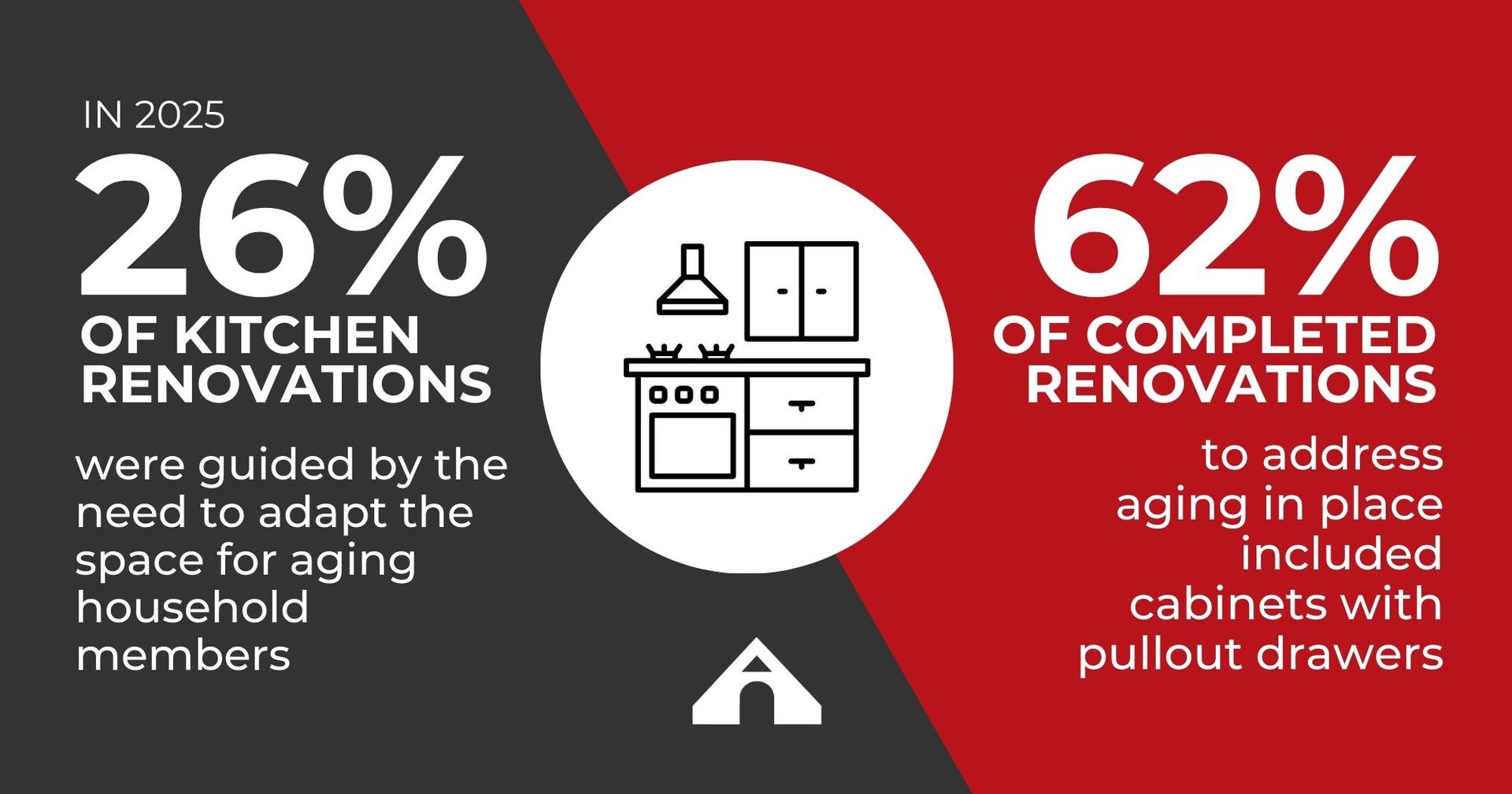
Kitchen Renovations for Aging in place
Your kitchen is one of the most important and frequently used spaces in your home, making it essential to ensure it remains safe, functional, and comfortable as you age. Thoughtful renovations can enhance accessibility, efficiency, and aesthetics, allowing you to continue enjoying the space with ease.
Kitchen renovations to consider include:
- Adjustable-height countertops provide flexibility, accommodating both seated and standing users.
- Pull-out shelves and lazy Susans maximize storage space and minimize the need for excessive reaching or bending.
- Deep drawers with full-extension glides offer easy access to pots, pans, and other kitchen essentials.
- Lever-style handles on cabinets make opening doors easier.
- Touchless faucets with motion sensors reduce strain and enhance hygiene.
- Soft-close cabinets and drawers minimize the risk of slamming, which can be difficult for individuals with limited hand strength.
- Refrigerators with pull-out drawers and easy-access compartments reduce the need to bend or stretch.
- Smart dishwashers with front-mounted controls make loading and unloading more convenient.
- Induction cooktops improve safety by staying cool to the touch except where cookware is placed, reducing the risk of burns. Automatic shut-off features on stoves and ovens prevent accidents caused by forgetting to turn off appliances.
- Pull-out or side-opening ovens reduce the need for bending and reaching into a hot oven.
- Heat-resistant countertops allow users to place hot pots and pans without needing to lift them onto trivets.
- Slip-resistant flooring, such as cork or textured tiles, can prevent falls.
- Under-cabinet lighting improves visibility for food preparation.
- Pull-out microwave drawers installed under the countertop prevent the need to reach overhead.
- Additional clearance over 36 inches between walls, cabinets, and appliances allows for easier maneuverability with mobility devices such as walkers.
Bedroom and Living Space Renovations for Aging in Place
Aging in place requires thoughtful modifications throughout the home to ensure safety, accessibility, and comfort. Living areas, and bedrooms should be designed to promote easy movement, reduce fall risks, and provide a functional yet inviting space.
Updates to make bedrooms and living spaces more accessible include:
- Widen doorways from standard width to at least 32-36 inches to accommodate walkers and wheelchairs.
- Offset hinges (swing-clear hinges) allow doors to open wider without requiring full reconstruction.
- Pocket doors or sliding doors are excellent alternatives to traditional swinging doors, reducing obstructions and making movement easier.
- Motion-activated lighting in hallways, stairways, and bedrooms reduces the risk of falls, especially at night.
- Smart lighting systems allow users to adjust brightness levels and control lights with voice commands, remote controls, or mobile apps.
- Task lighting in reading areas, and workspaces enhances visibility and reduces eye strain.
- Nightlights with automatic sensors provide gentle illumination for nighttime navigation.
- Glare-free LED bulbs offer consistent lighting without harsh shadows, improving overall visibility.
- Lower closet rods and shelving allow easy access to clothing and everyday essentials.
- Open shelving and clear storage bins help keep essential items within sight and reach, reducing the need to rummage through deep cabinets.
- Minimizing furniture clutter creates open pathways for easy movement with walkers or wheelchairs.
- Firm, high-seated chairs and beds make it easier to sit down and stand up.
- Non-slip rugs or secured carpeting prevent tripping hazards.
- Smart home automation (such as motorized window blinds and voice-controlled devices) adds convenience and enhances safety.
The best time to plan for aging in place is before it becomes a necessity. Proactively making modifications to your home allows you to stay ahead of potential challenges and avoid rushed decisions during a time of need. Even small changes, like upgraded lighting and smart technology, can significantly improve safety and ease of use. If you are ready to ensure your home remains a comfortable, functional, and welcoming space for years to come schedule a consultation with Acadian House Design + Renovation today. Our team of Certified Aging-in-Place Specialists (CAPS) is ready to help you create a home that adapts to your changing needs while maintaining its beauty and value.
